RadRhino Step-Thru Communication Error Troubleshooting Guide
If your RadRhino Step-Thru fails to power on or the LCD display shows an "Error 30," you can troubleshoot the issue by resetting the connection to the bike's electrical components. It is important to check and reset all connectors until the error is resolved, even if they appear to be fully seated and in good condition.
Follow the steps below to troubleshoot a communication error.
If you are not confident in your ability to safely and successfully perform all steps, we recommend having the work performed or checked by a local, certified, and reputable bike mechanic.
Tools needed:
- Flat side cutters
- A flat head screwdriver
- A camera
- A few zip ties
Do not insert any tools into the connectors, use metal tools on the internal pins, or attempt to straighten bent bins. Doing so can lead to irreversible damage to the component or cause injury or death.
The process for checking the connectors below will involve unplugging the connector, inspecting the inside for damage, plugging in the connector, and turning on the bike to check if the error continues while the connector is plugged in.
Click the heading below to begin troubleshooting.
Battery Tray
- Get the bike ready for maintenance. Turn off the bike, remove the battery, and press and hold the MODE button to discharge remaining power.
- Check the battery and battery mount terminal contacts. Visually inspect the terminal contacts for any dirt, damage, or moisture.
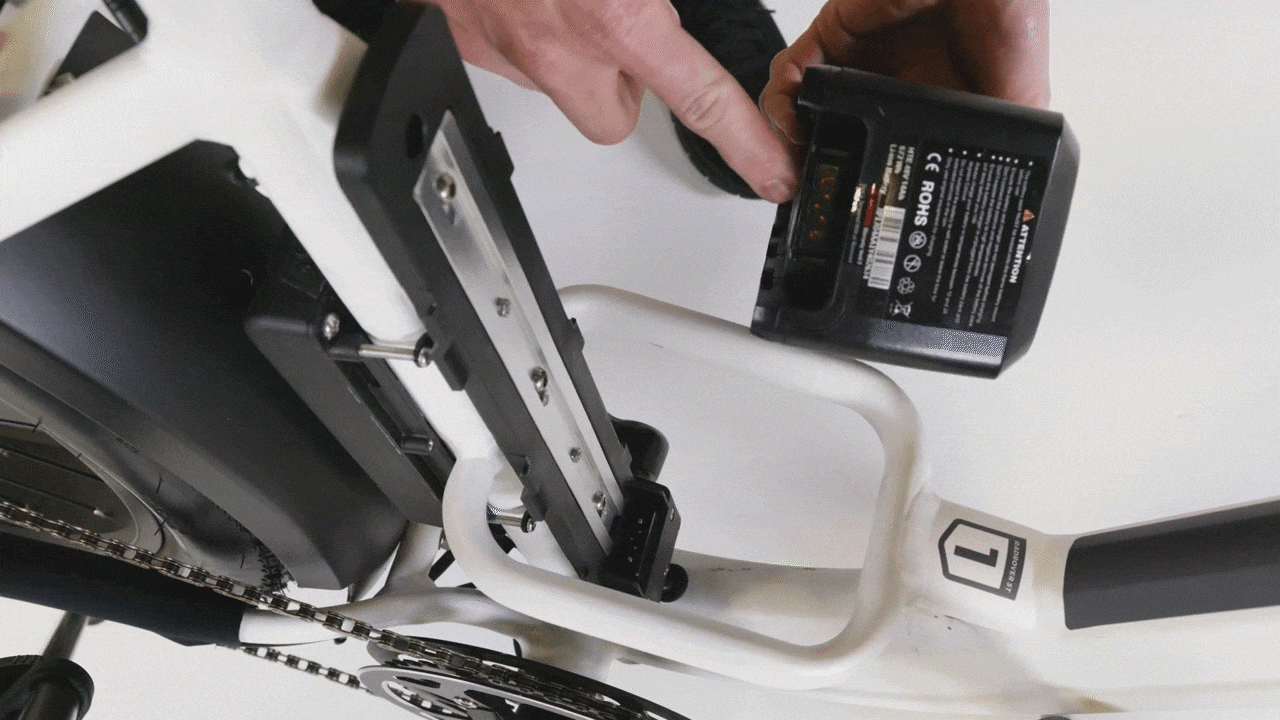
If the terminal contacts are damaged or show signs of moisture, do not attempt to repair the damage or clean the contacts. Take a photo and contact us for more help.
If the terminal contacts are in good condition, set the battery aside for now and continue troubleshooting.
Display Connector
- Locate and unplug the display connector. Follow the cable from the part to the connector. Snip zip ties for easier access. Untwist the metal portion of the connector fully, then pull directly apart, without twisting, to unplug.
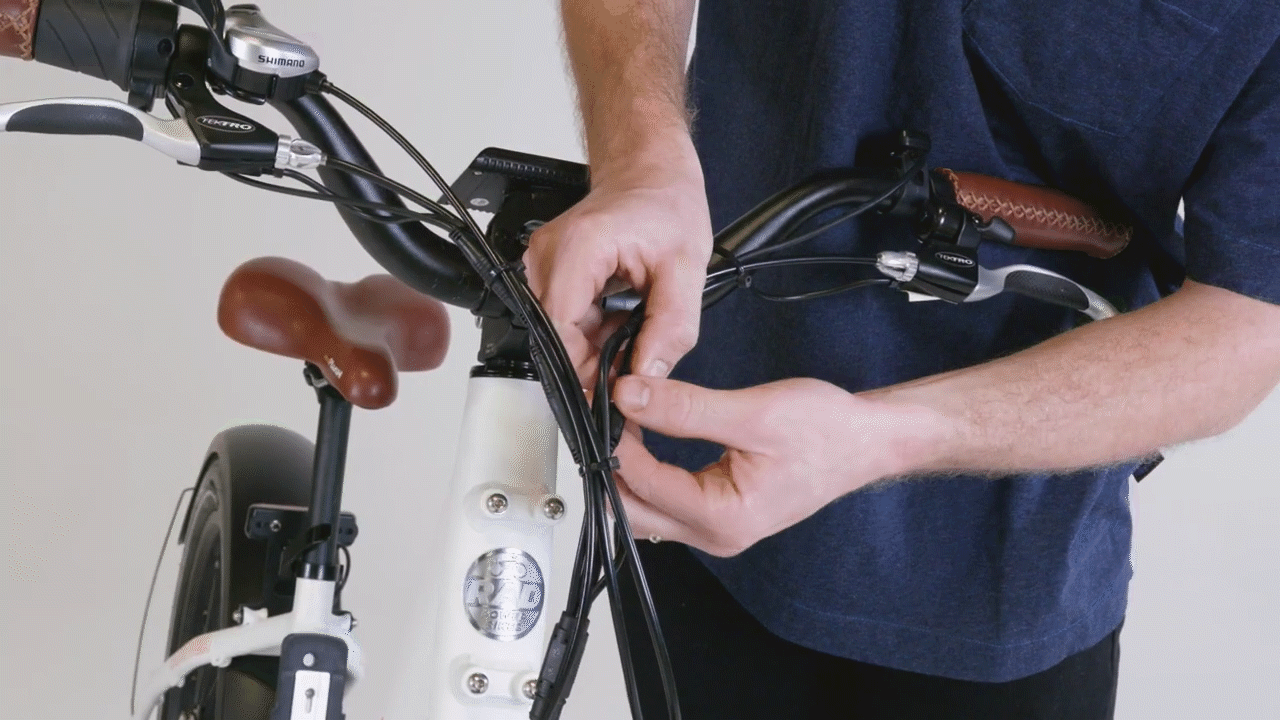
- Inspect the inside of the connector for damage, dirt, or moisture.
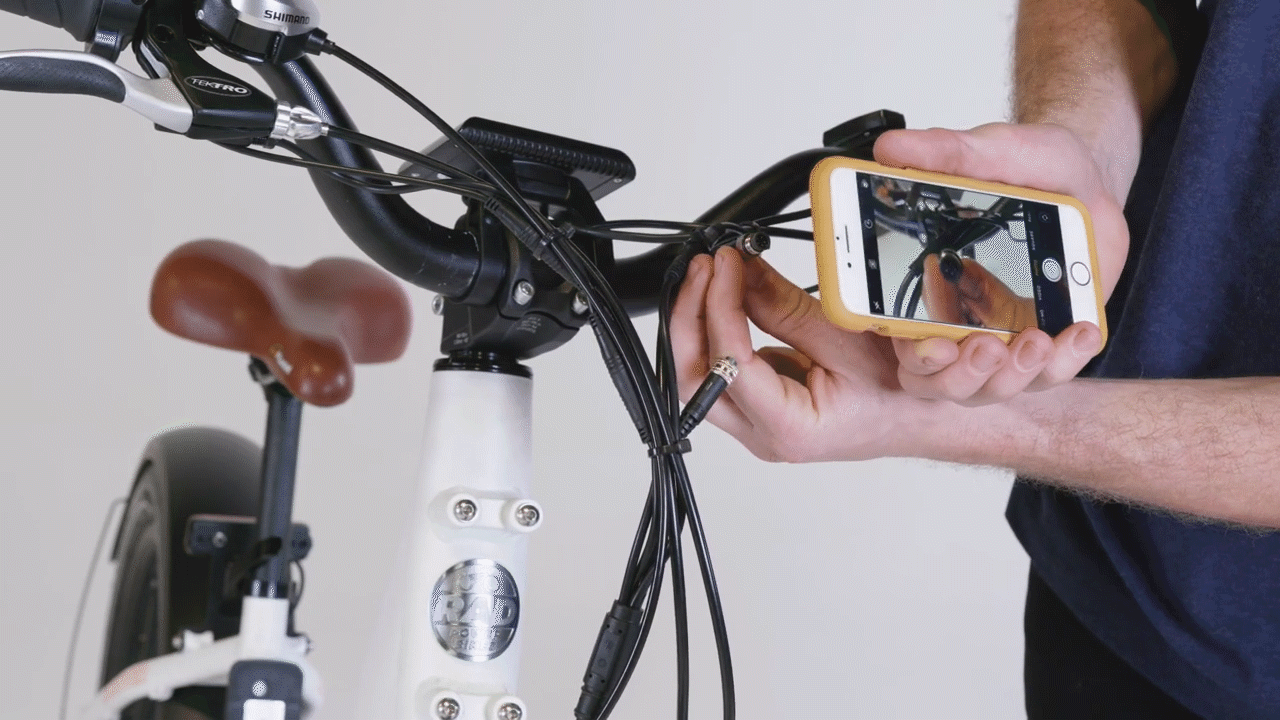
If the inside of the connector is damaged, dirty, or wet, take a photo and contact us for more help. Do not attempt to fix broken or bent pins or clean the inside of the connector.
If the connector looks normal, continue troubleshooting.
- Plug in the connector. Line up the internal notch and pins (and external indicators) and press directly together without twisting. Then twist the metal portions until the connector is secure. Replace any snipped zip ties and trim them to be flush and smooth.
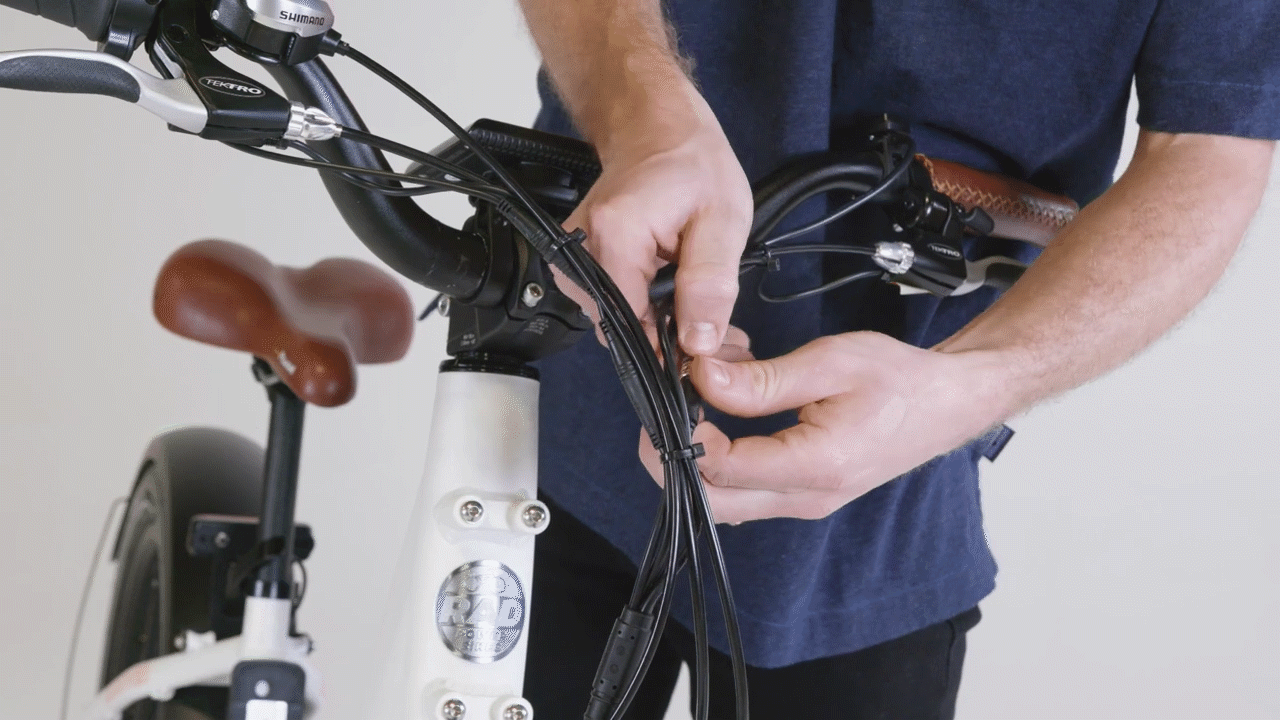
- Reinstall the battery and turn on the bike to check if the error is resolved.
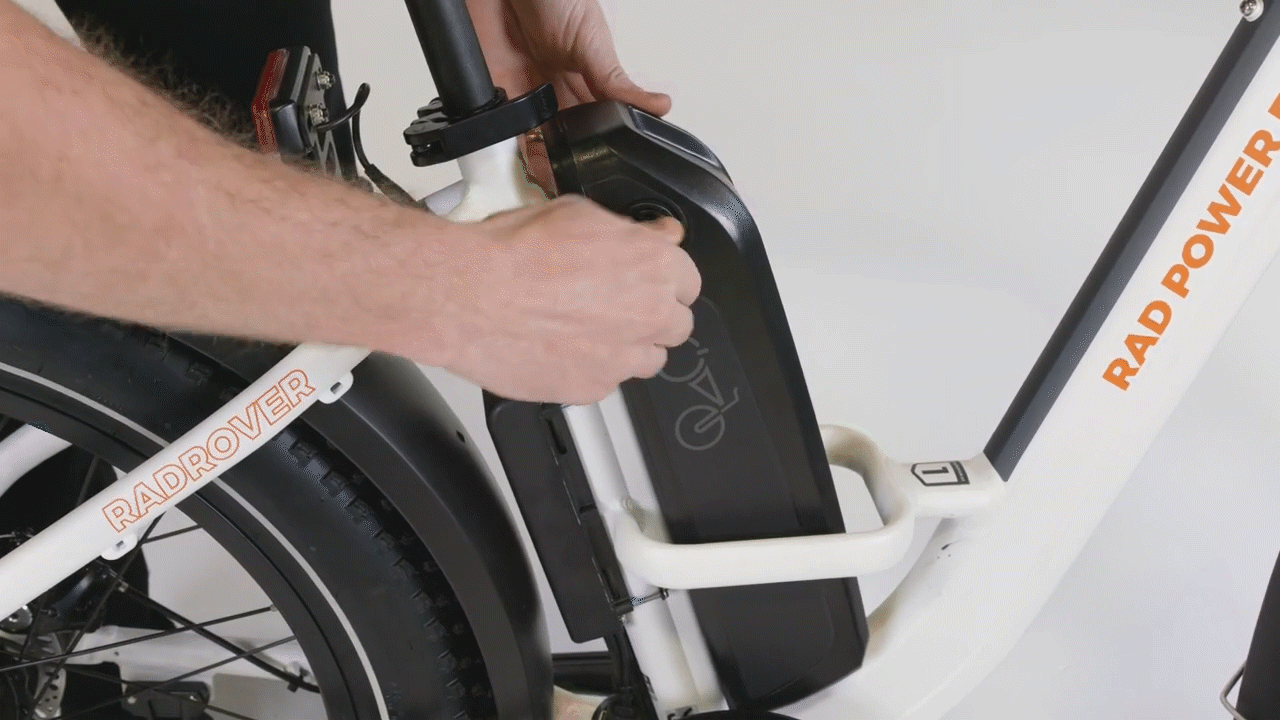
If the error is resolved, the connector was likely loose and triggered the error. Test the bike fully and ride Rad!
If the error continues, turn off the bike, remove the battery, discharge remaining power, and continue troubleshooting.
Wiring Harness Connector
- Locate and unplug the wiring harness connector. The wiring harness connector is located inside the downtube.
- Turn the handlebar and feed the wiring harness into the downtube. Locate the wiring harness cable at the front of the bike and gently feed the cable into the upper cable opening of the downtube.
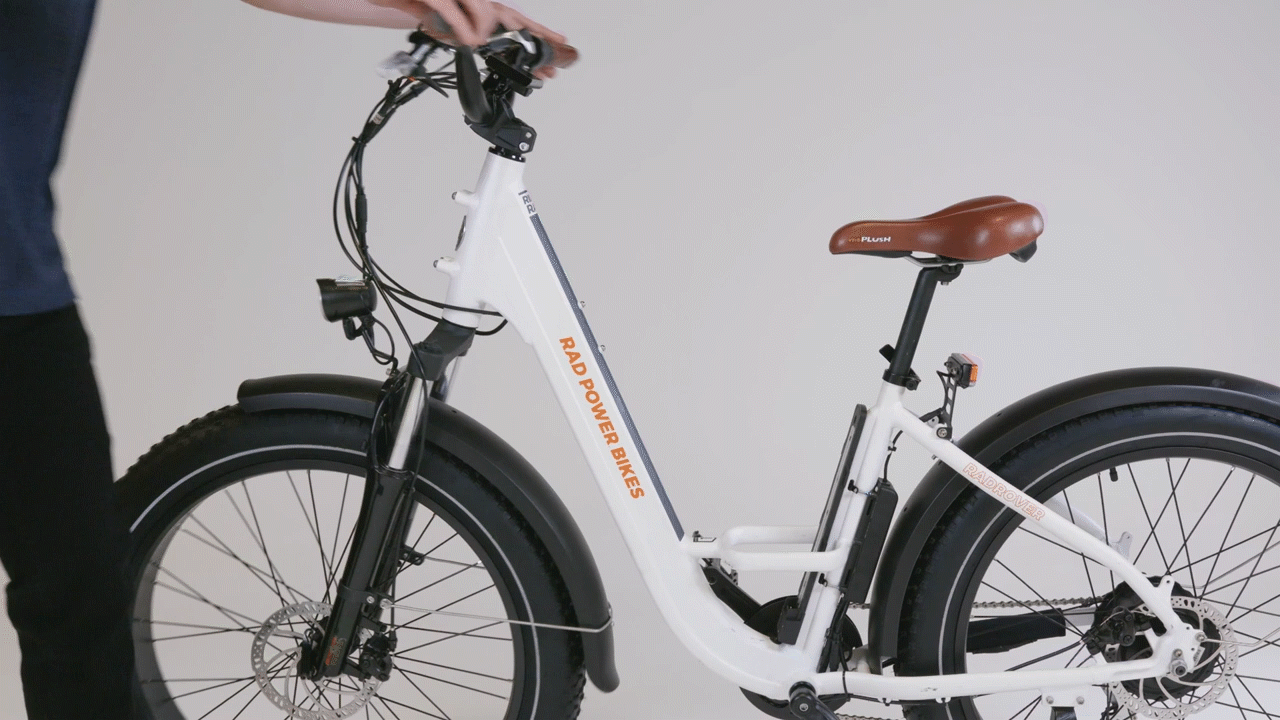
- Unseat the rubber grommet at the lower cable opening of the downtube. Use a flat head screwdriver and careful pinching movements to carefully unseat the rubber grommet. Be careful not to damage the grommet during removal. Snip the zip tie securing the cables at the bottom of the downtube, if needed.
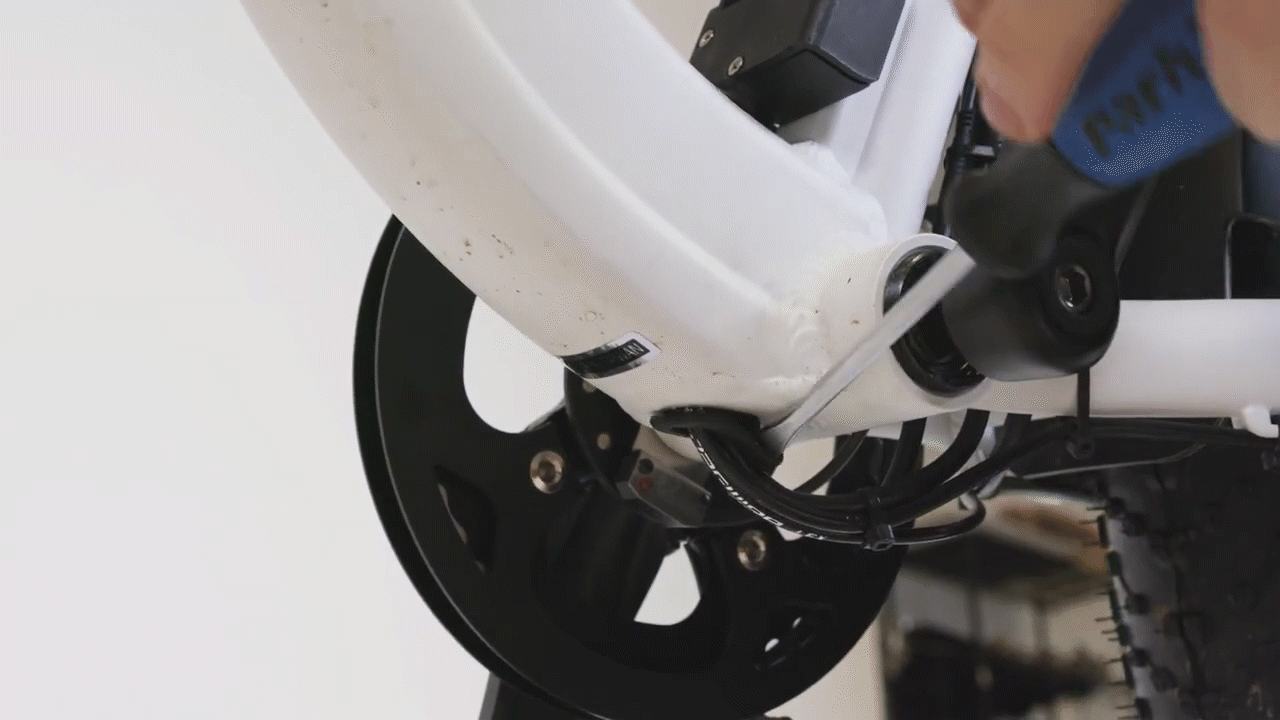
- Access and unplug the wiring harness connector. At the bottom of the downtube, carefully pull the wiring harness cable until the connector is out of the lower cable opening. Use caution to avoid unplugging the connector while inside the downtube. Once the connector is out of the downtube, pull each side of the connector directly apart, without twisting, to unplug.
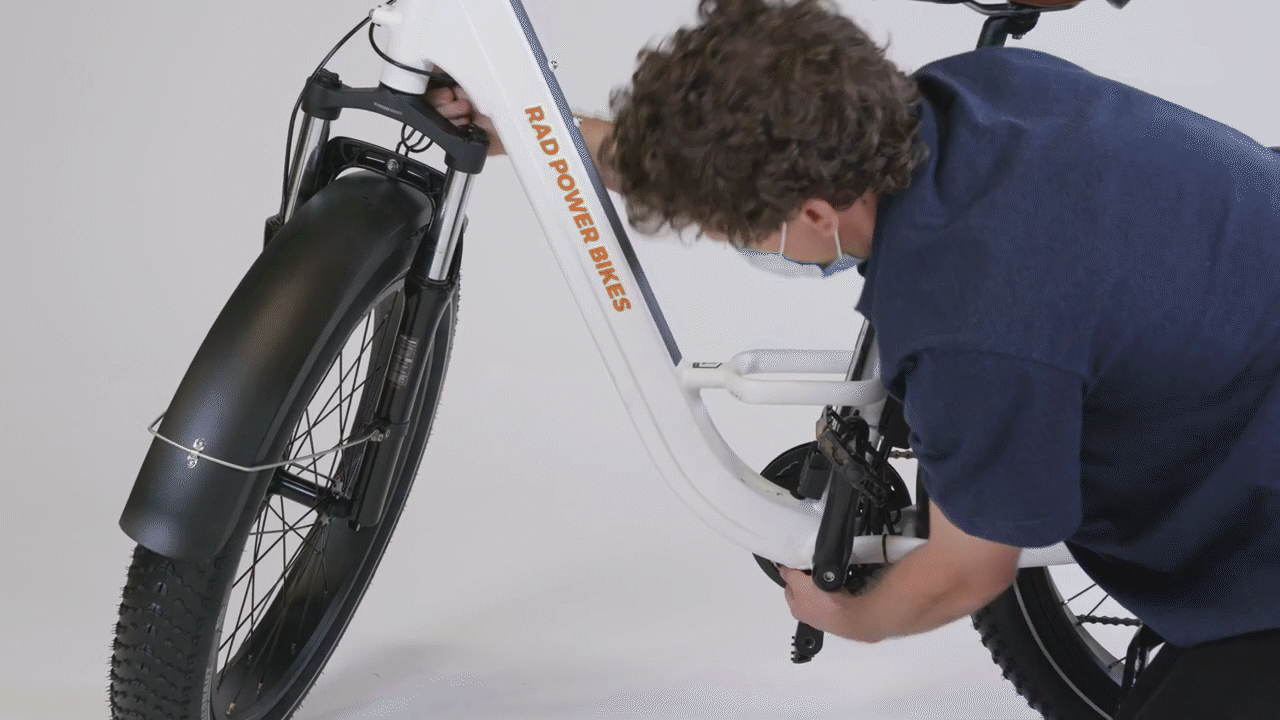
- Turn the handlebar and feed the wiring harness into the downtube. Locate the wiring harness cable at the front of the bike and gently feed the cable into the upper cable opening of the downtube.
- Inspect the inside of the connector for damage, dirt, or moisture.
If the inside of the connector is damaged, dirty, or wet, take a photo and contact us for more help. Do not attempt to fix broken or bent pins or clean the inside of the connector.
If the connector looks normal, continue troubleshooting.
- Plug in the connector.
- Locate both connector ends and ensure the connector end passes through the grommet. Line up the internal notch and pins (and external indicators) and press directly together without twisting.
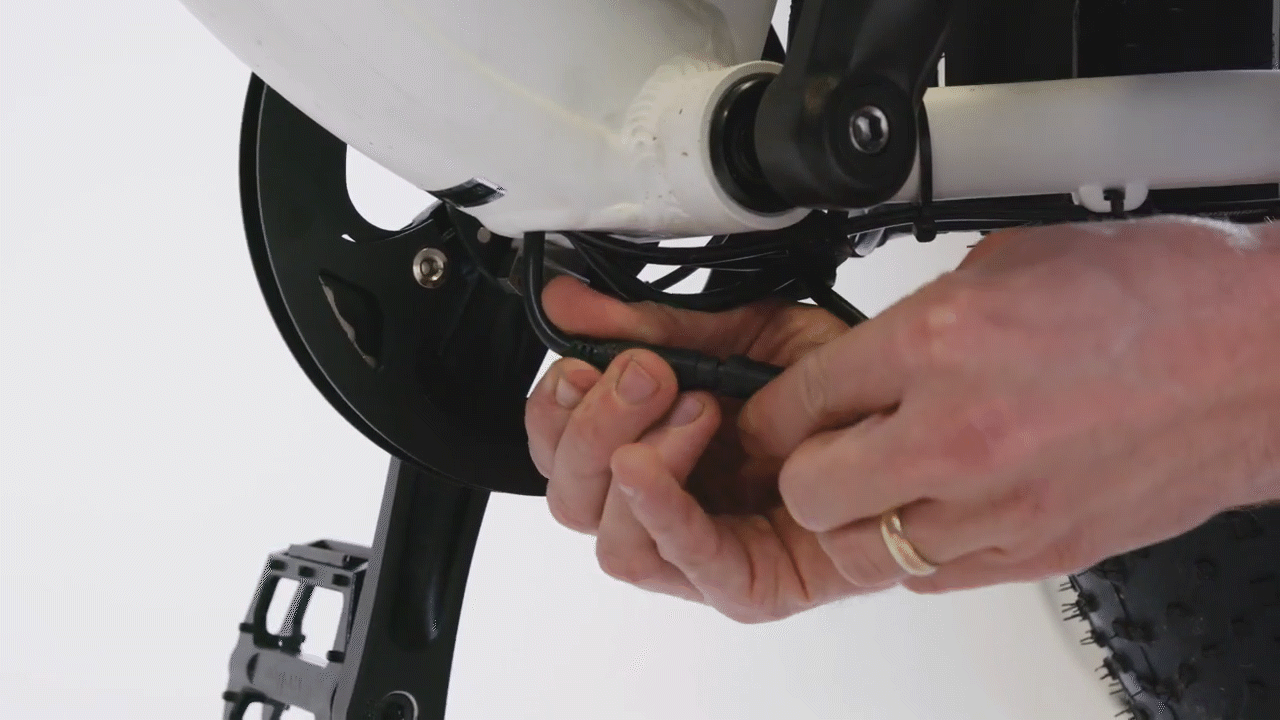
- Insert the connector into the lower cable opening of the downtube. Double-check that the connector is secure and gently pass the connector into the lower cable opening.
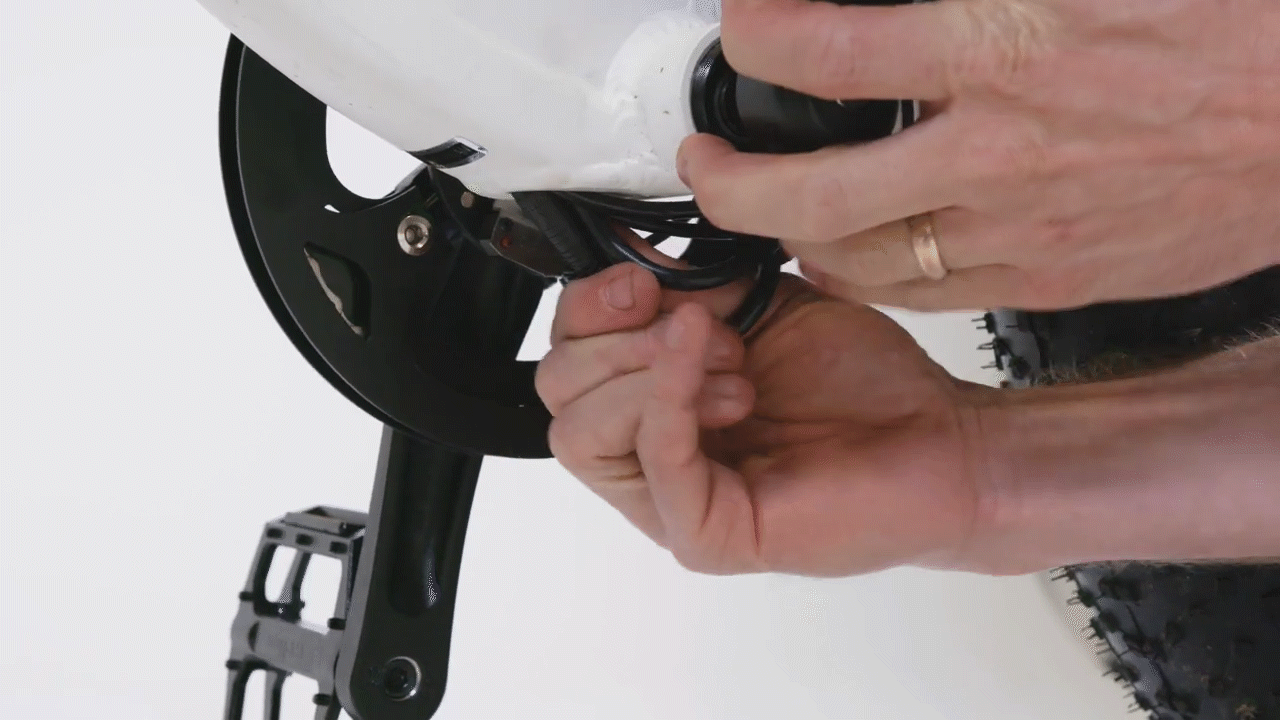
- Adjust the wiring harness at the front of the bike. At the front of the bike, gently adjust the wiring harness cable to add cable slack.
- Reinstall the rubber grommet. Gently work the grommet around the opening until fully seated.
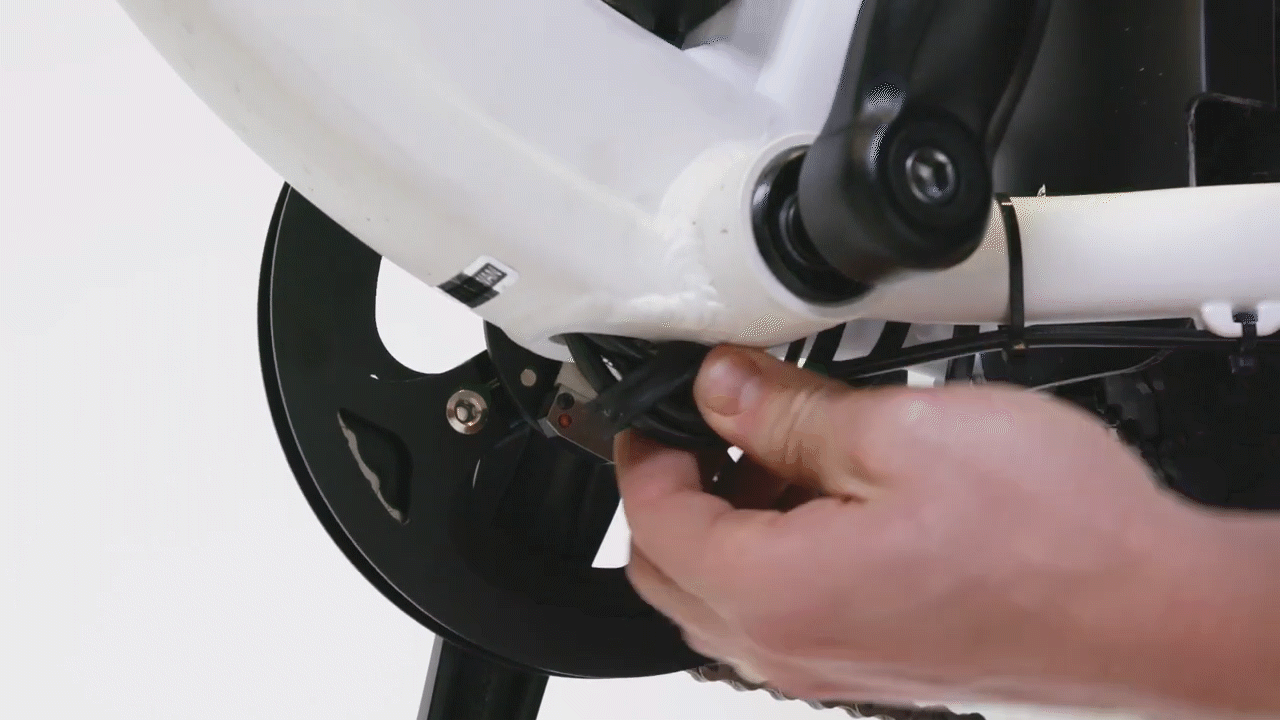
- Replace any snipped zip ties and trim them to be flush and smooth.
- Locate both connector ends and ensure the connector end passes through the grommet. Line up the internal notch and pins (and external indicators) and press directly together without twisting.
- Reinstall the battery and turn on the bike to check if the error is resolved.
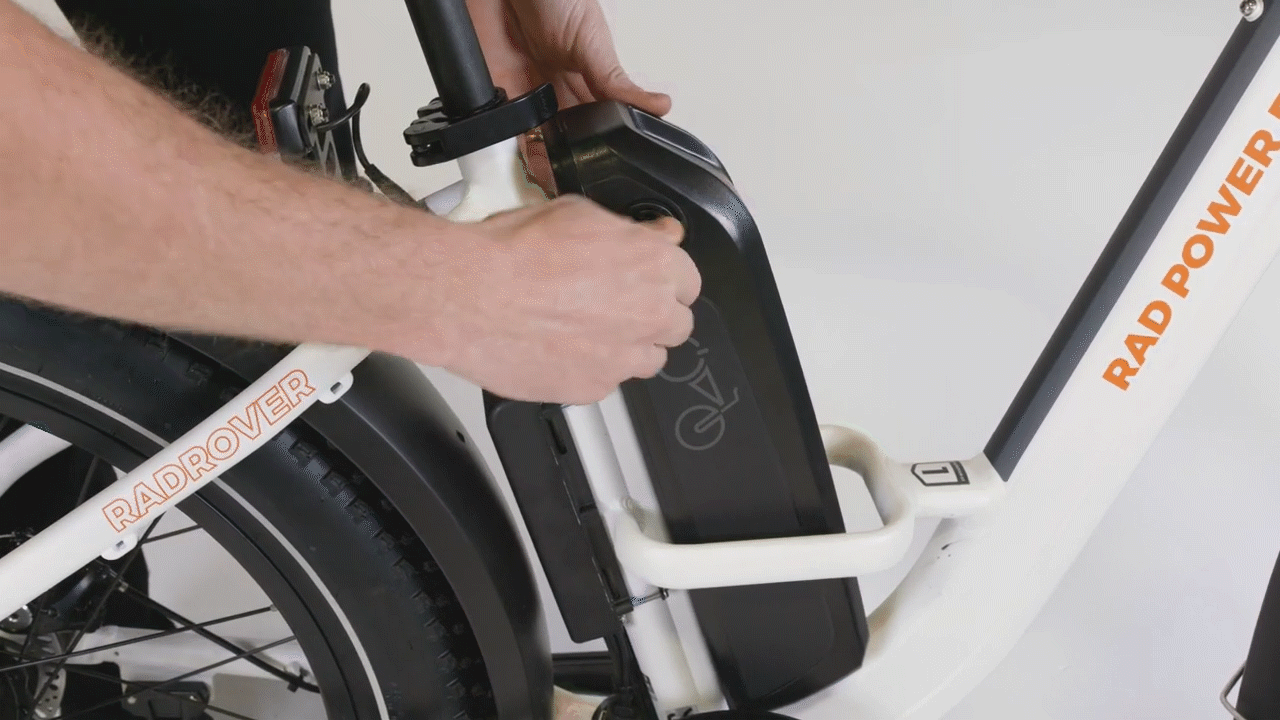
If the error is resolved, the connector was likely loose and triggered the error. Test the bike fully and ride Rad!
If the error continues, turn off the bike, remove the battery, discharge remaining power, and continue troubleshooting.
Battery Tray
- Locate and unplug the battery tray connector. Locate the cable that exits the bottom of the battery tray and trace it until you find the connector. Snip zip ties for easier access if needed, then pull each side of the connector directly apart without twisting.
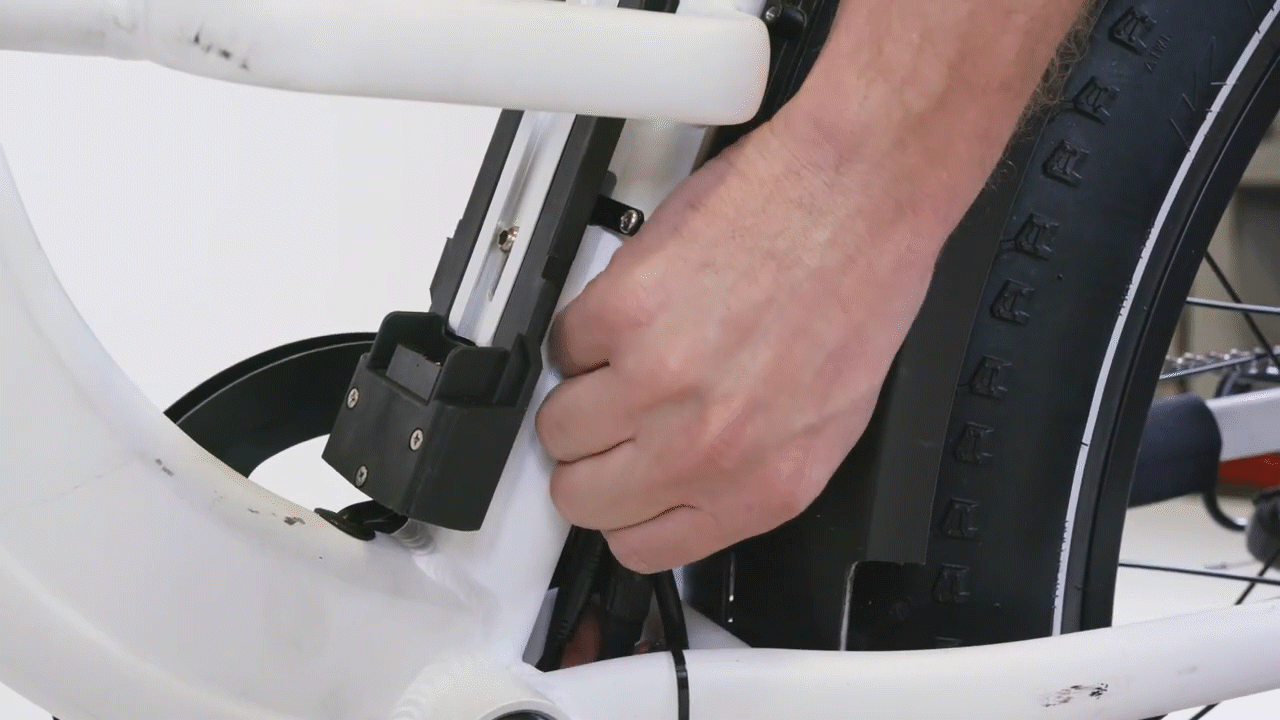
- Inspect the inside of the connector for damage, dirt, or moisture.
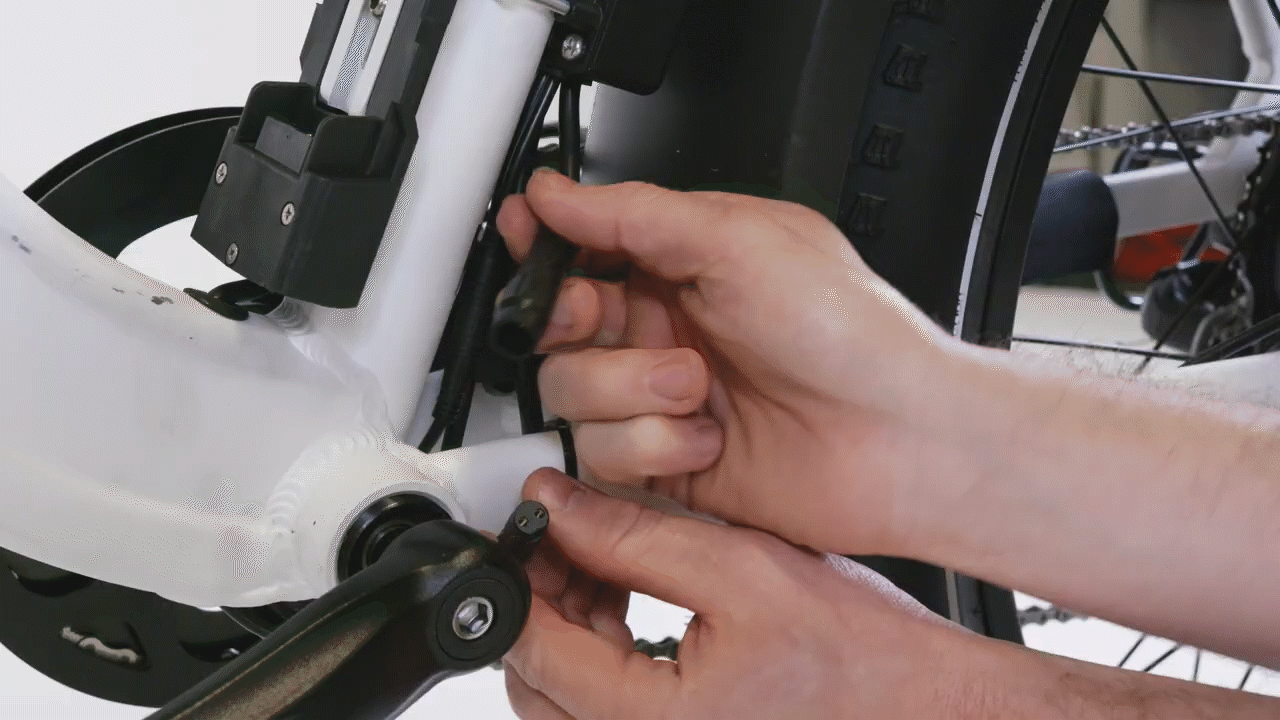
If the inside of the connector is damaged, dirty, or wet, take a photo and contact us for more help. Do not attempt to fix broken or bent pins or clean the inside of the connector.
If the connector looks normal, continue troubleshooting.
- Plug in the connector. Line up the internal notch and pins (and external indicators) and press directly together without twisting. Replace any snipped zip ties and trim them to be flush and smooth.
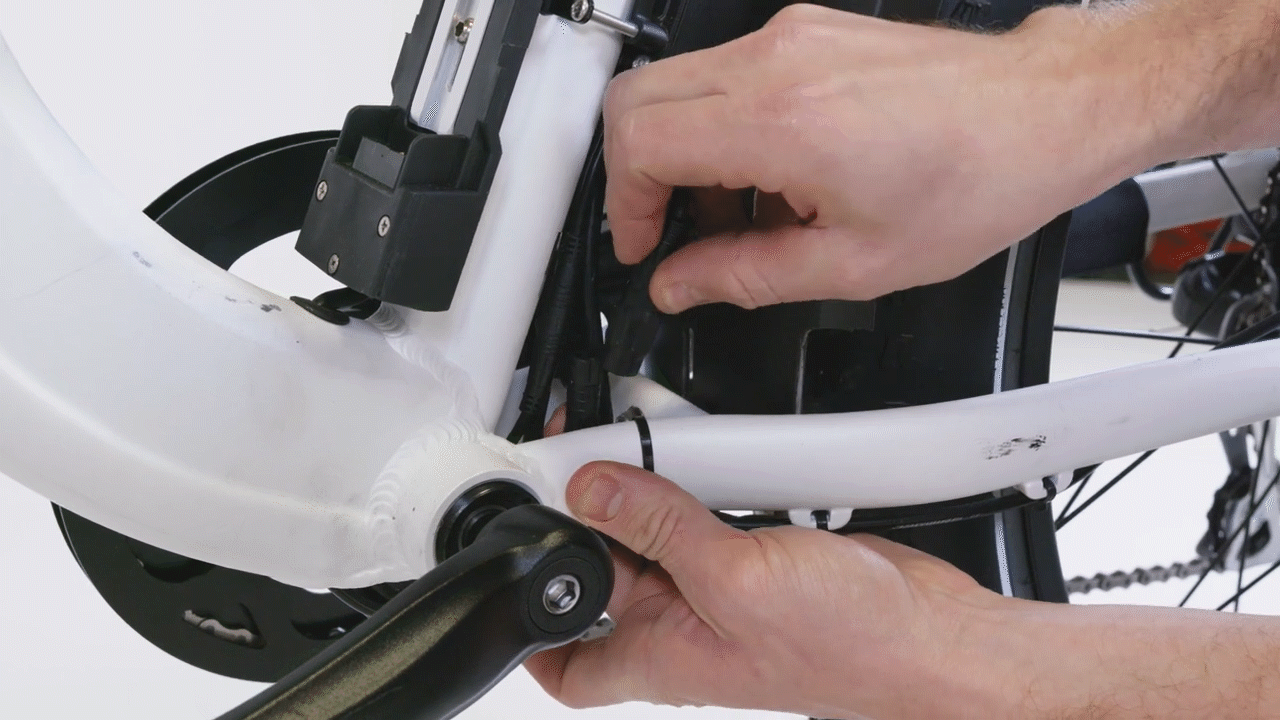
- Reinstall the battery and turn on the bike to check if the error is resolved.
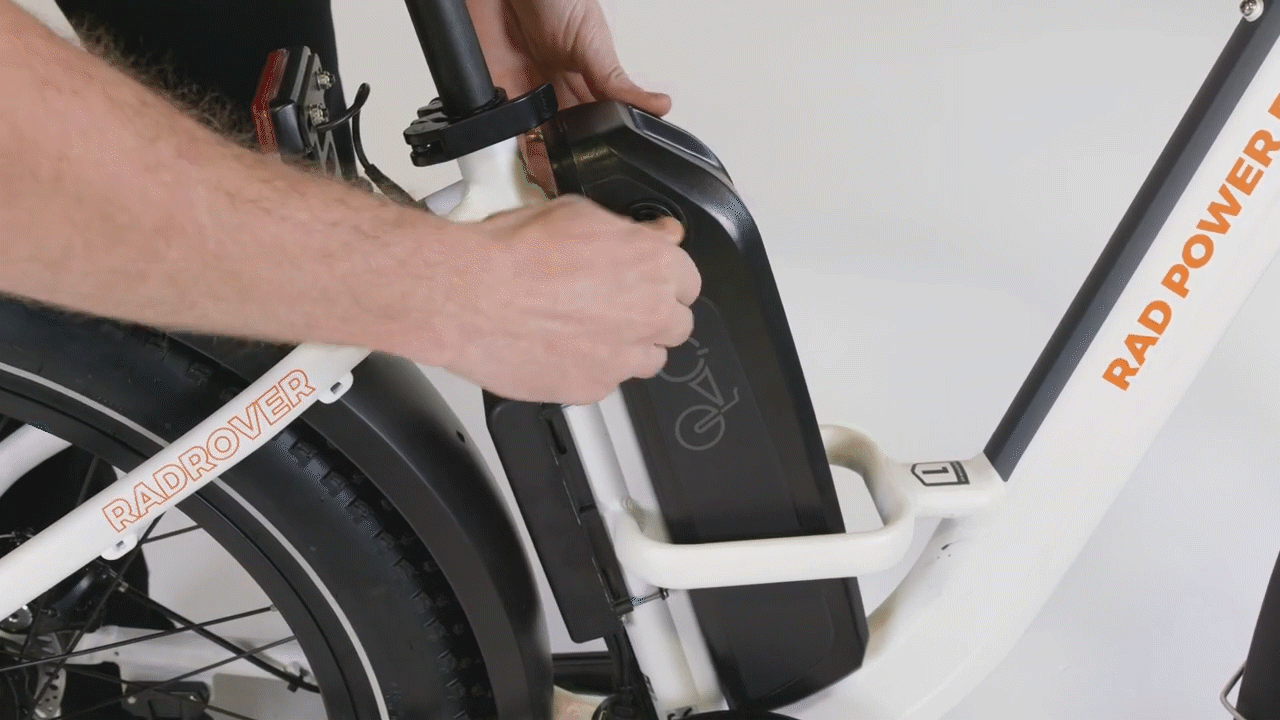
If the error is resolved, the connector was likely loose and triggered the error. Test the bike fully and ride Rad!
If the error continues, turn off the bike, remove the battery, discharge remaining power, and continue troubleshooting.
If the error continues, continue troubleshooting to help isolate the part that may be causing the error. The process for checking the connectors below will involve unplugging the connector and turning on the bike to check if the error continues while the connector is still unplugged.
Click the heading below to begin troubleshooting.
Pedal Assist (PAS) Sensor Connector
- Locate and unplug the pedal assist (PAS) connector near the bottom bracket. Follow the cable from the part to the connector. Snip zip ties for easier access, then pull each side of the connector directly apart without twisting.
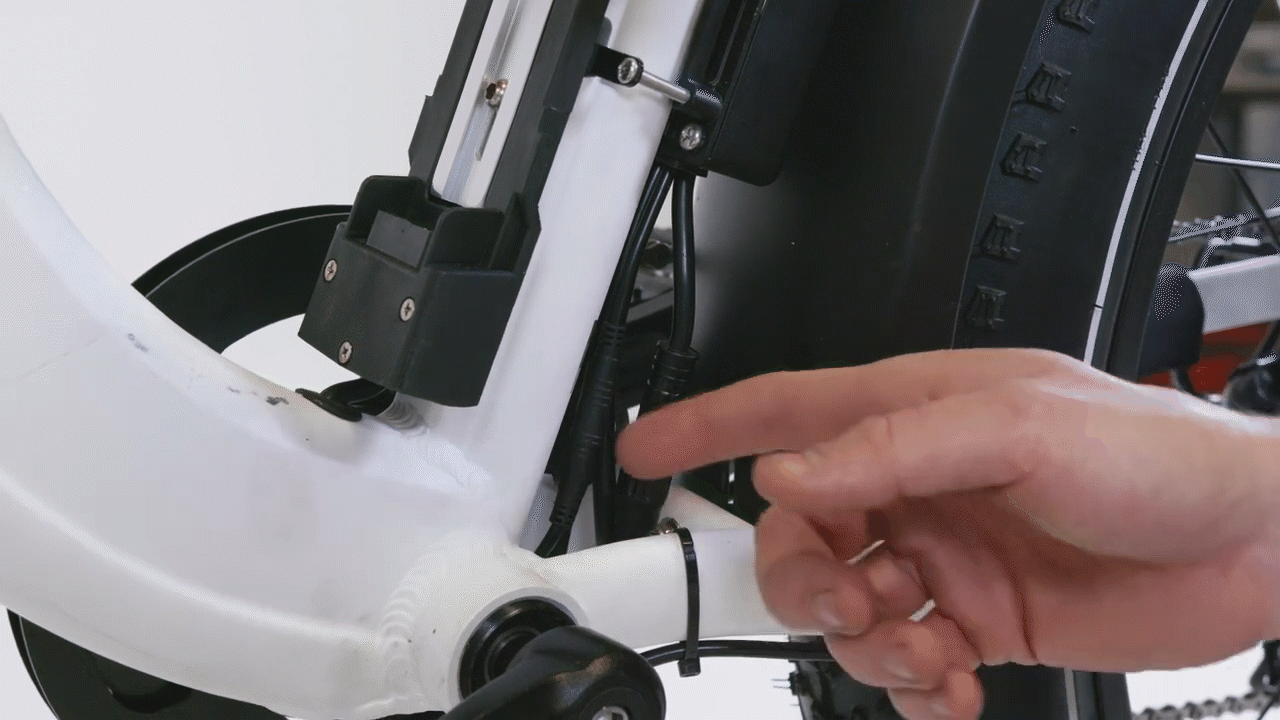
- Inspect the inside of the connector for damage, dirt, or moisture.
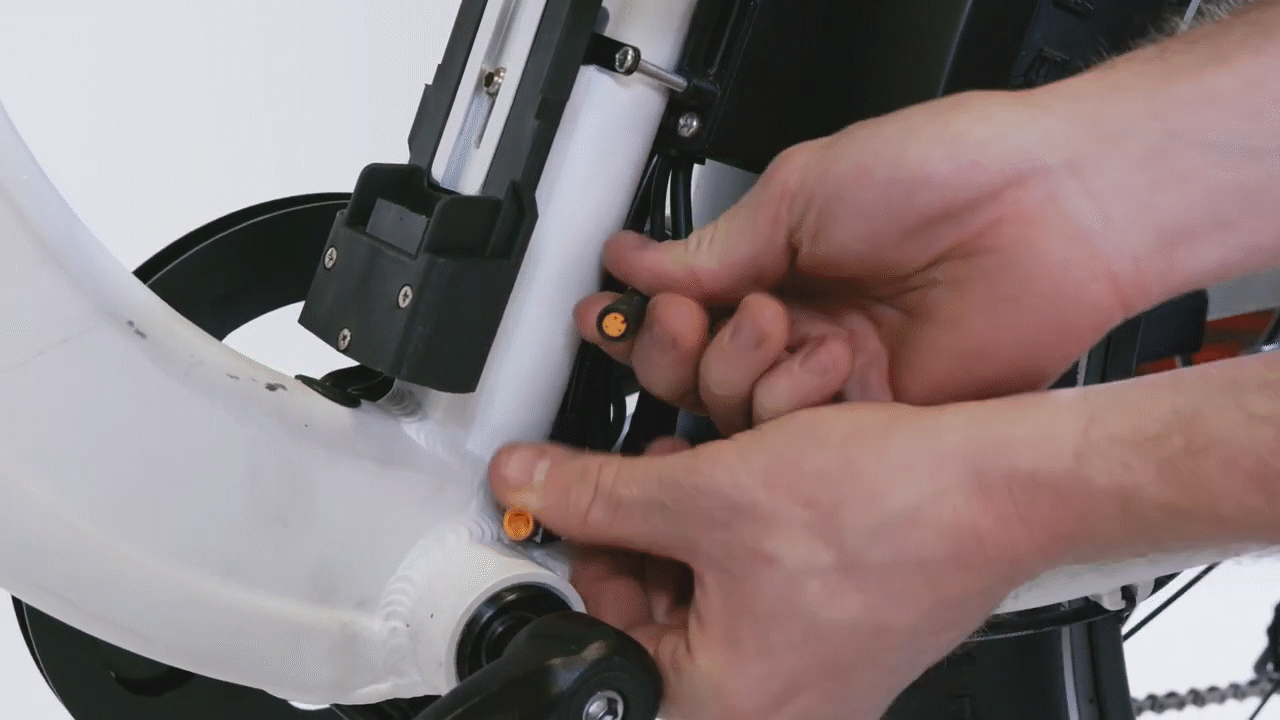
If the inside of the connector is damaged, dirty, or wet, take a photo and contact us for more help. Do not attempt to fix broken or bent pins or clean the inside of the connector.
If the connector looks normal, continue troubleshooting.
- Check if the error continues with the connector unplugged. Leave the connector unplugged. Reinstall the battery, turn on the bike, and check if the error continues.
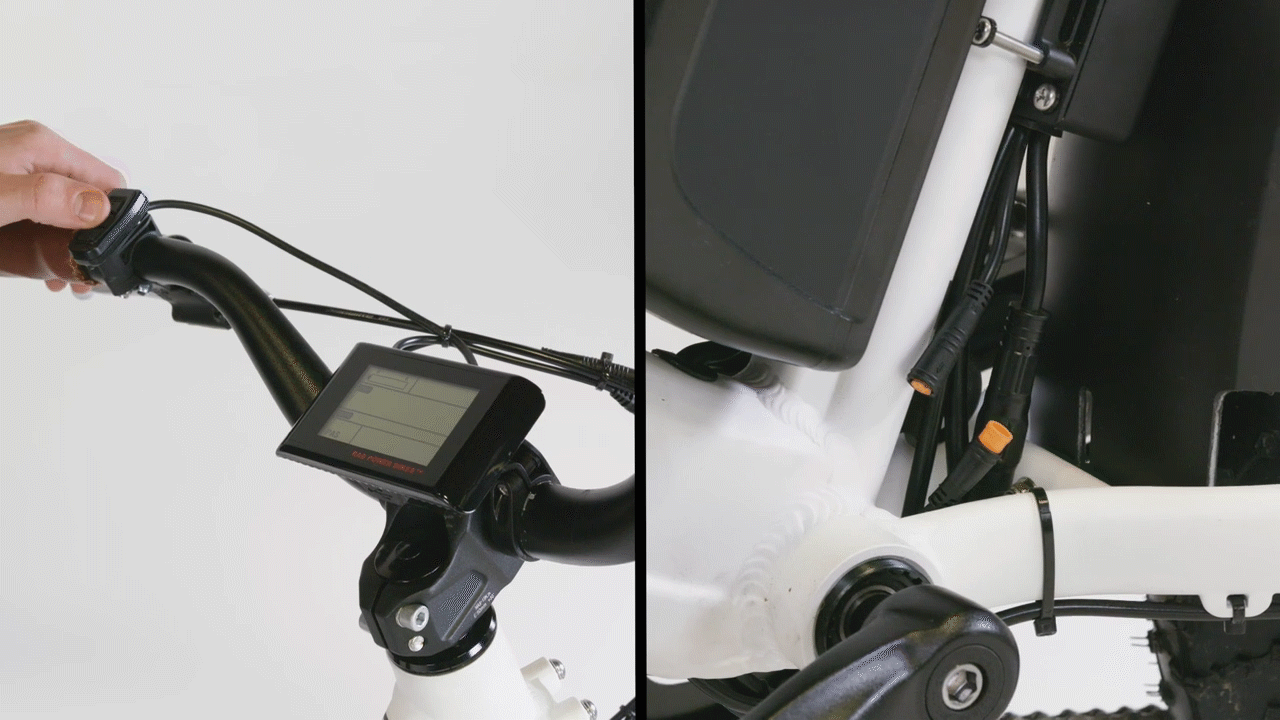
If the error is resolved, the part likely triggered the error and may need to be replaced. Take a photo and contact us for more help.
If the error continues, turn off the bike, remove the battery, discharge remaining power, and continue troubleshooting.
- Plug in the connector. Line up the internal notch and pins (and external indicators) and press directly together without twisting. Replace any snipped zip ties and trim them to be flush and smooth.
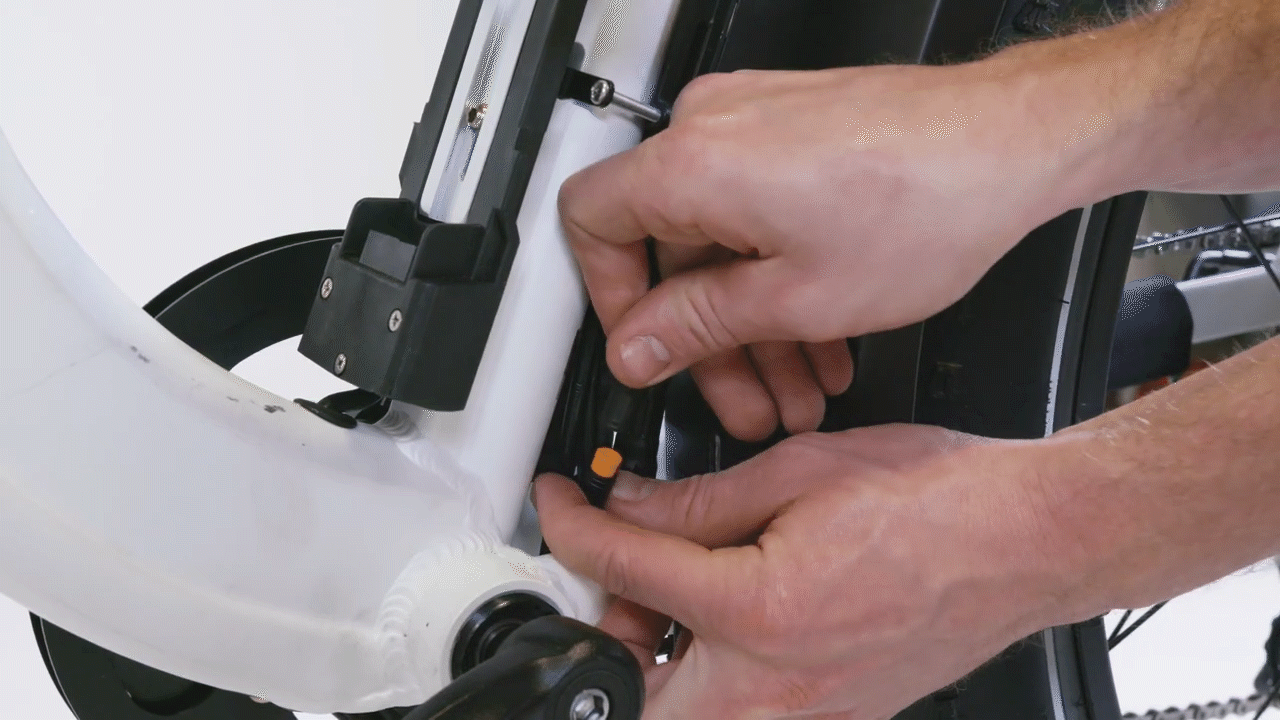
- Reinstall the battery and turn on the bike to check if the error is resolved.
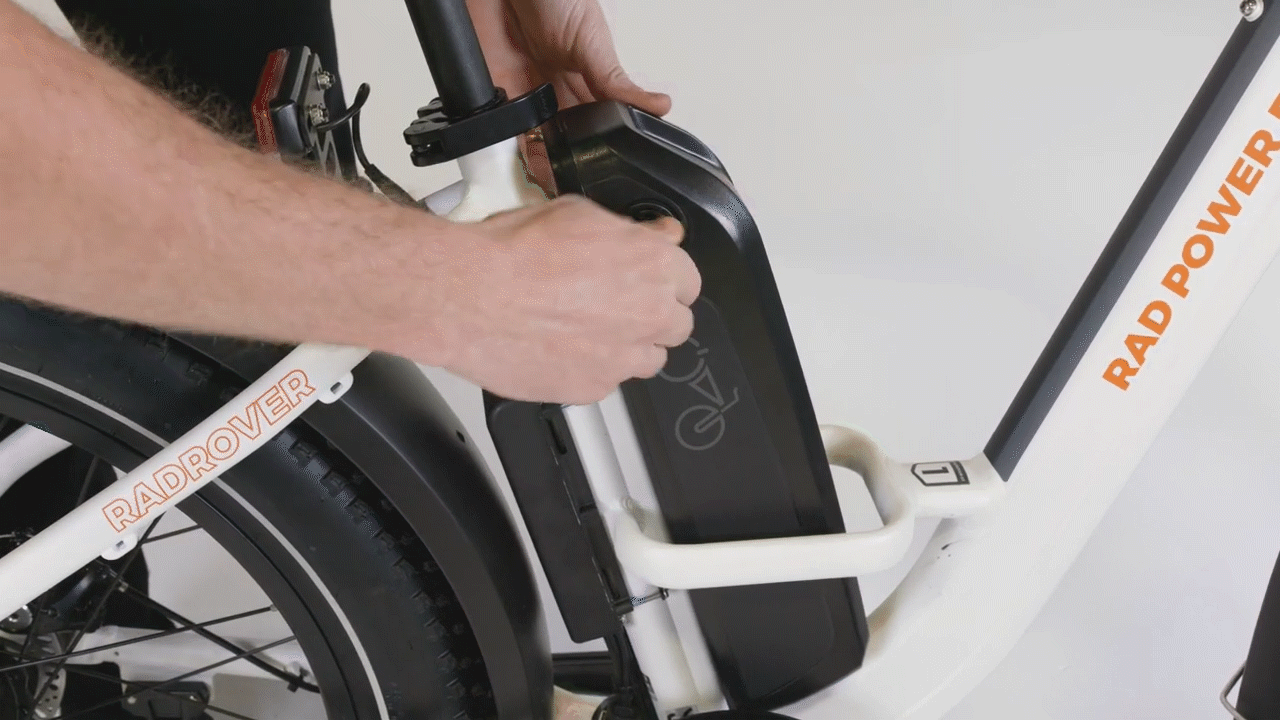
If the error is resolved, the connector was likely loose and triggered the error. Test the bike fully and ride Rad!
If the error continues, turn off the bike, remove the battery, discharge remaining power, and continue troubleshooting.
Motor Connector
- Locate and unplug the motor connector near the chainstay on the rider's left side of the bike. Follow the cable from the part to the connector. Without touching the brake rotor, snip zip ties for easier access, then pull each side of the connector directly apart without twisting.
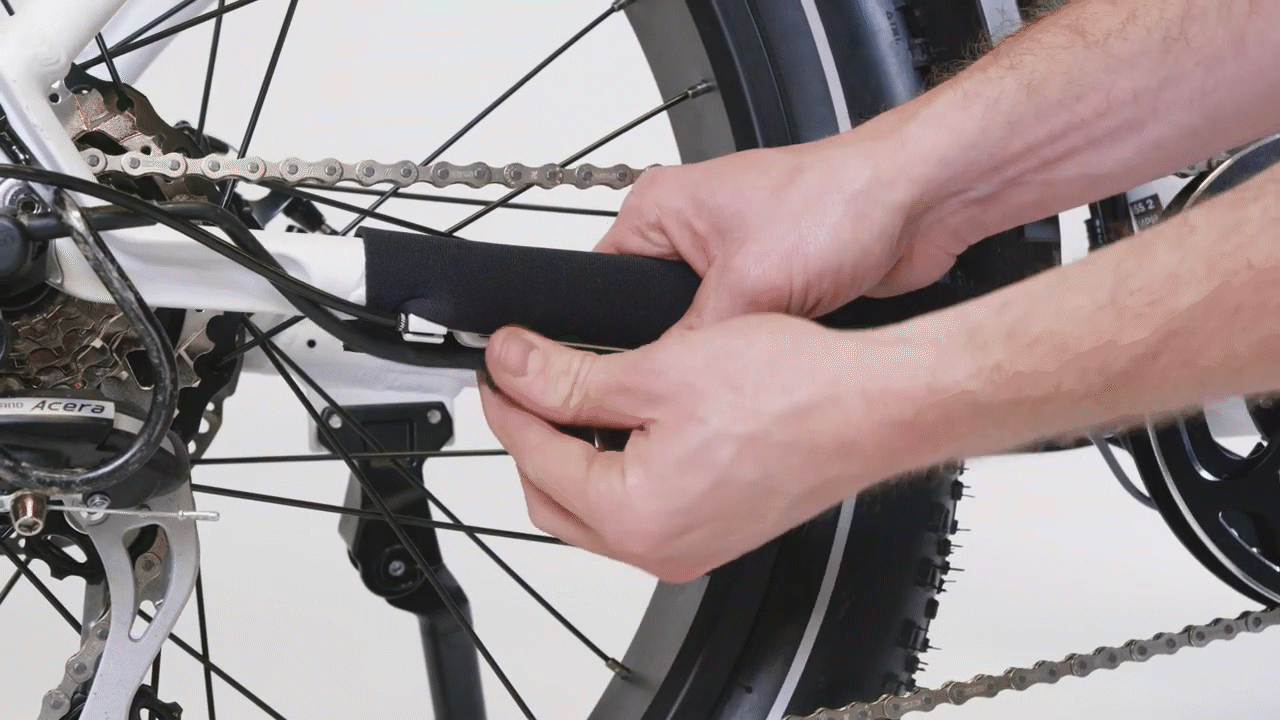
- Inspect the inside of the connector for damage, dirt, or moisture.
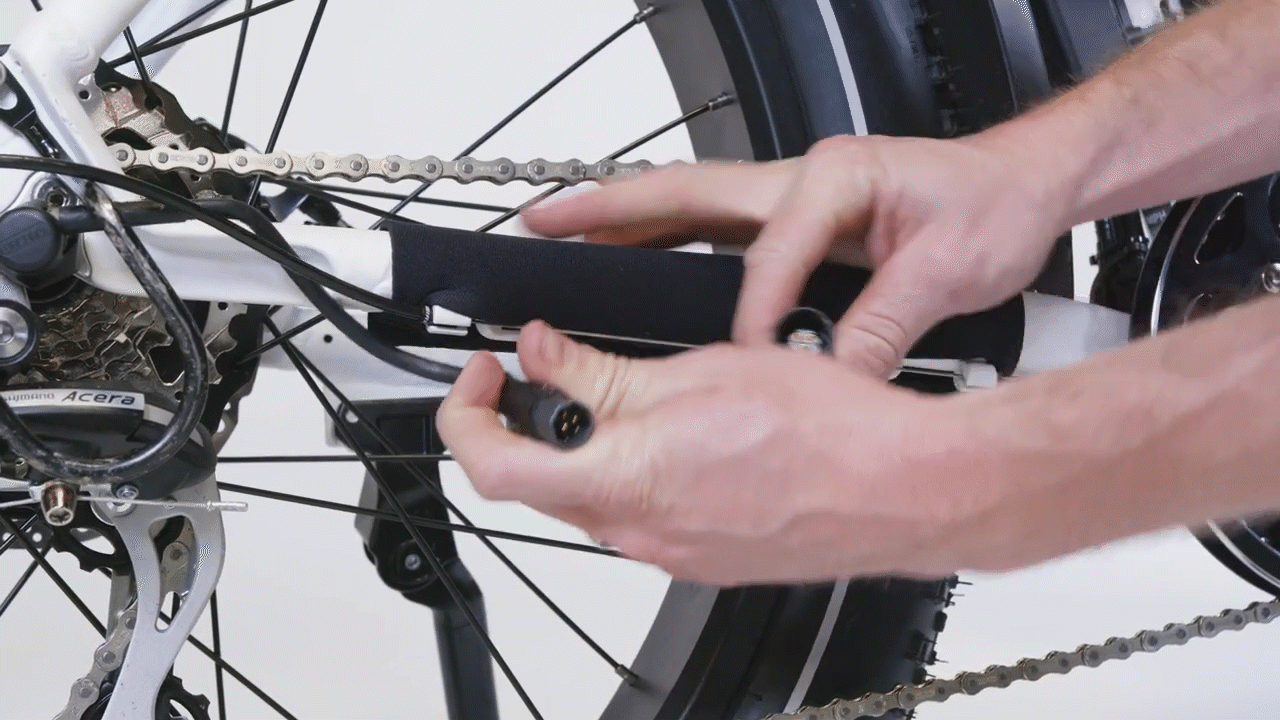
If the inside of the connector is damaged, dirty, or wet, take a photo and contact us for more help. Do not attempt to fix broken or bent pins or clean the inside of the connector.
If the connector looks normal, continue troubleshooting.
- Check if the error continues with the connector unplugged. Leave the connector unplugged. Reinstall the battery, turn on the bike, and check if the error continues.
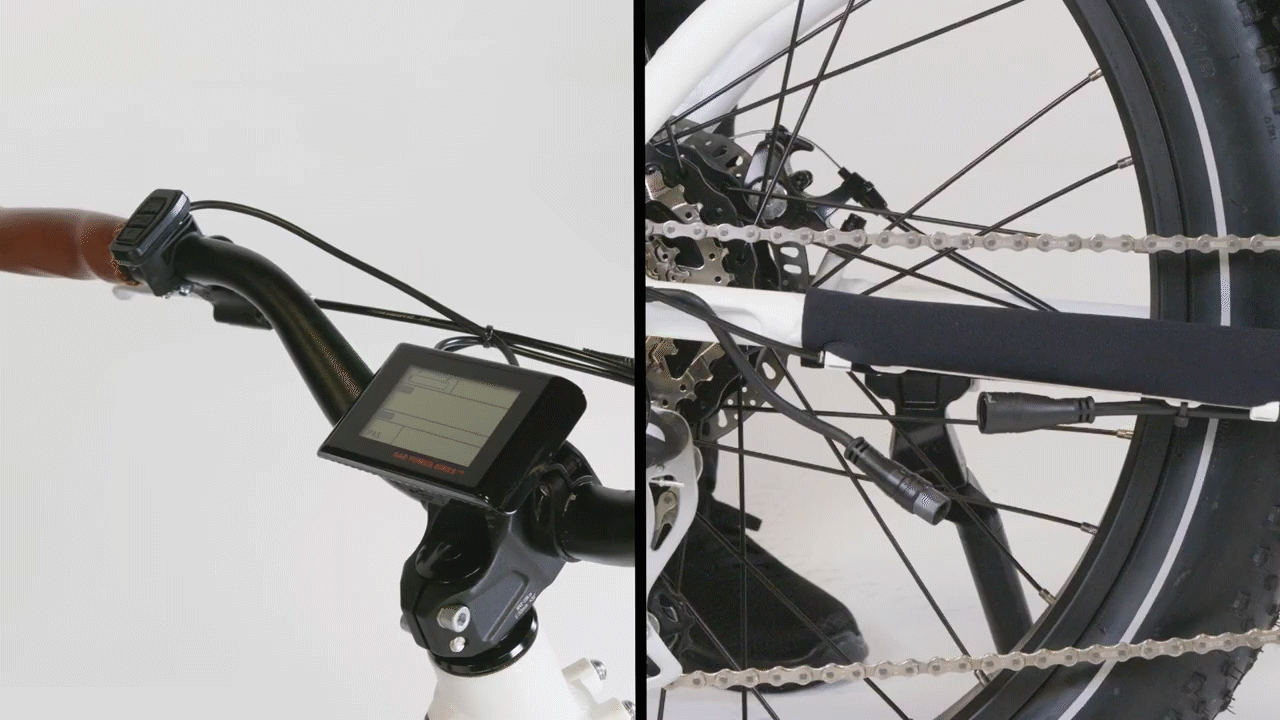
If the error is resolved, the part likely triggered the error and may need to be replaced. Take a photo and contact us for more help.
If the error continues, turn off the bike, remove the battery, discharge remaining power, and continue troubleshooting.
- Plug in the connector. Line up the internal notch and pins (and external indicators) and press directly together without twisting. Replace any snipped zip ties and trim them to be flush and smooth.
.gif?revision=1)
- Reinstall the battery and turn on the bike to check if the error is resolved.
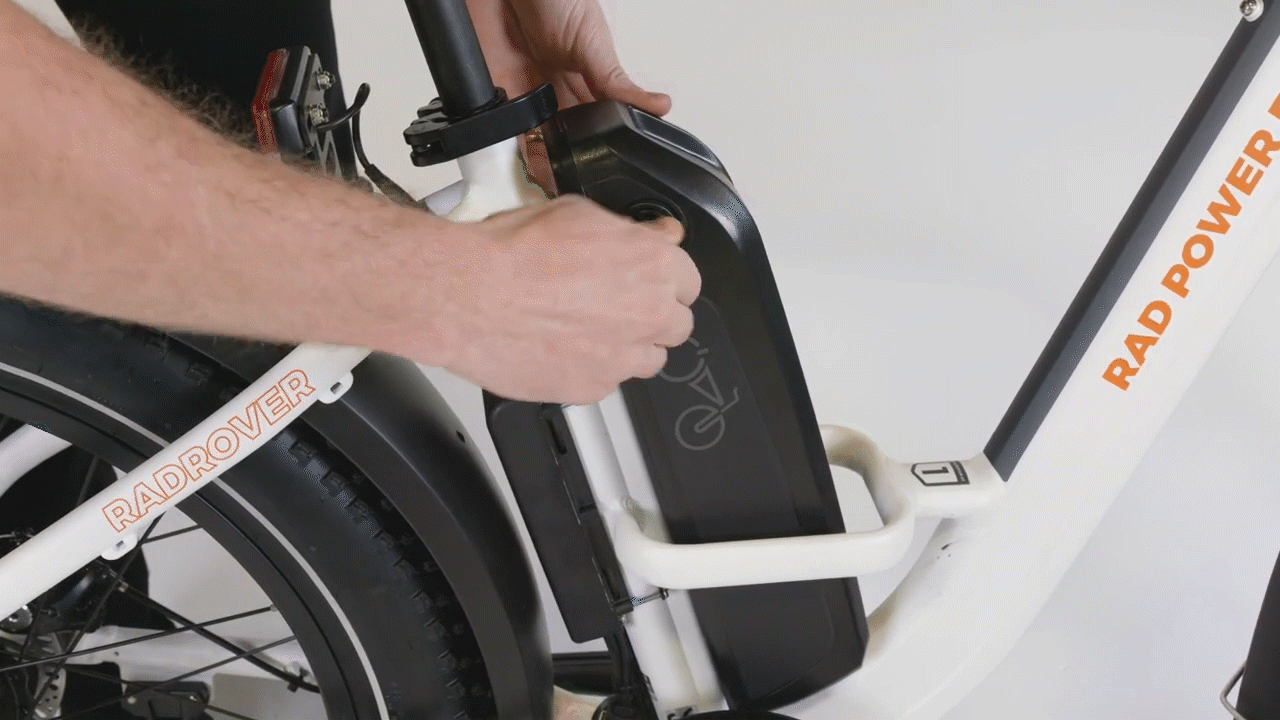
If the error is resolved, the connector was likely loose and triggered the error. Test the bike fully and ride Rad!
If the error continues, turn off the bike, remove the battery, discharge remaining power, and continue troubleshooting.
Taillight Connector
- Locate and unplug the taillight connector. Follow the cable from the part to the connector. Snip zip ties for easier access, then pull each side of the connector directly apart without twisting.
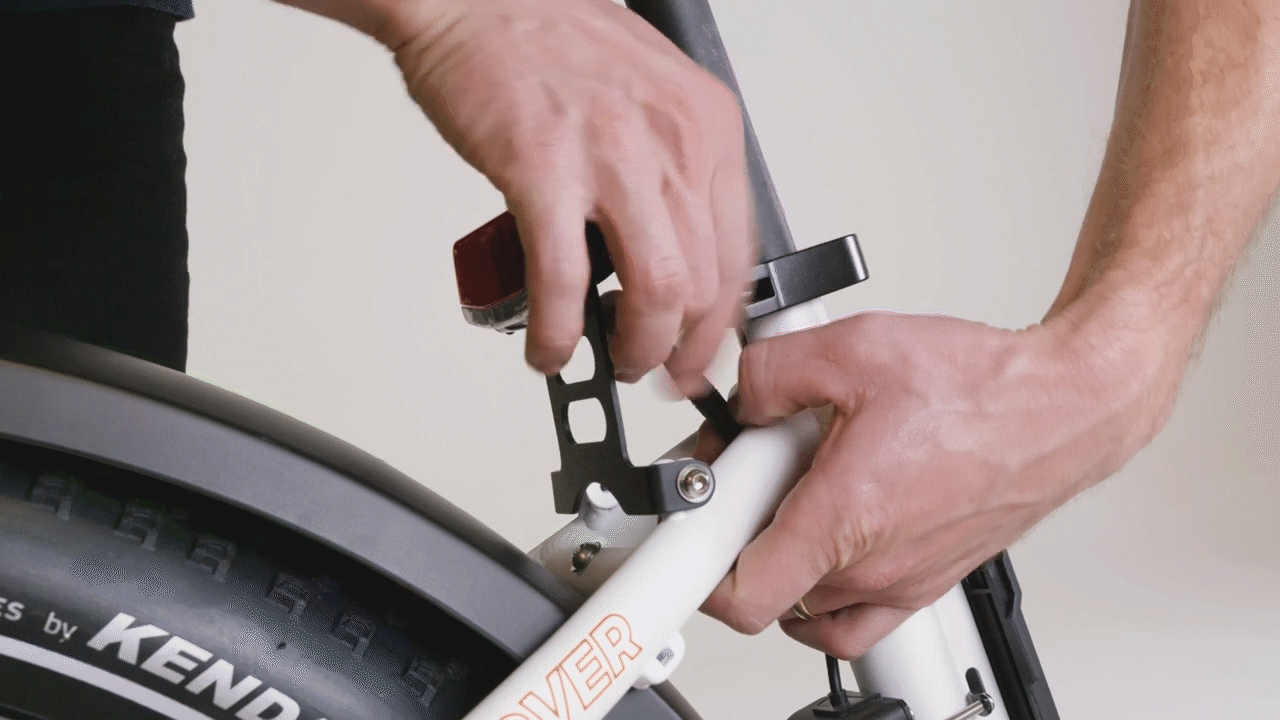
- Inspect the inside of the connector for damage, dirt, or moisture.
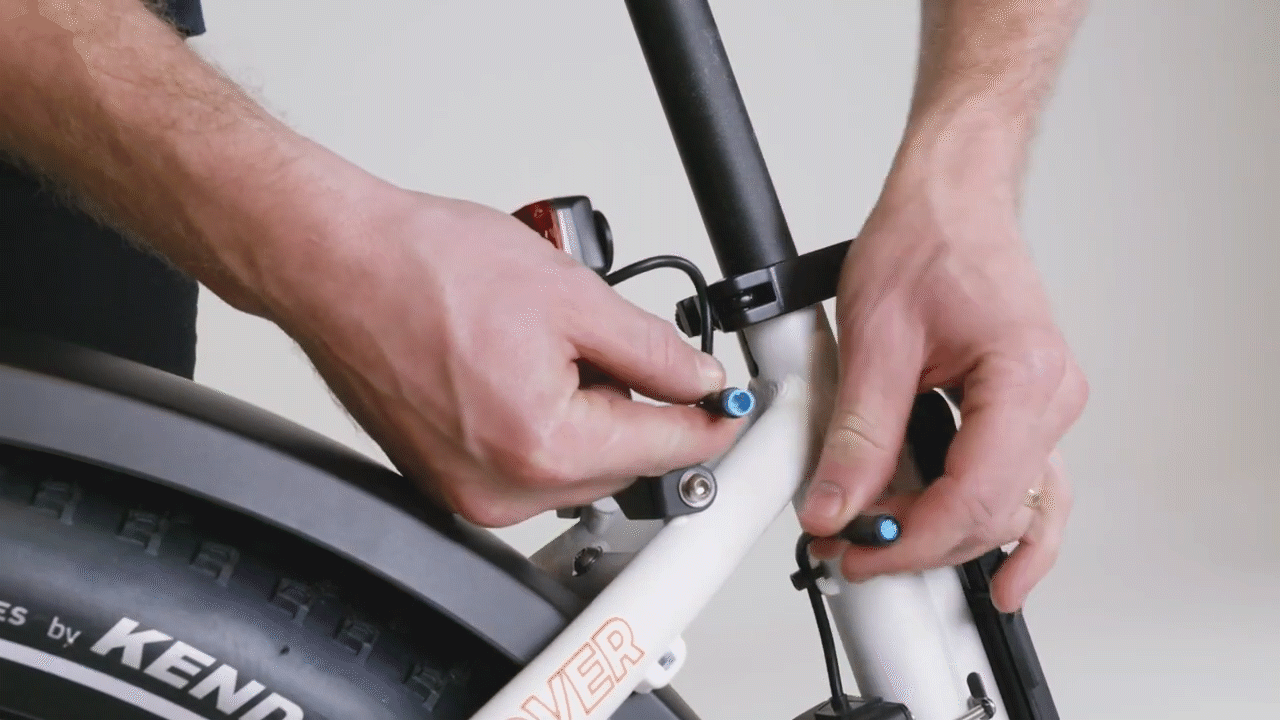
If the inside of the connector is damaged, dirty, or wet, take a photo and contact us for more help. Do not attempt to fix broken or bent pins or clean the inside of the connector.
If the connector looks normal, continue troubleshooting.
- Check if the error continues with the connector unplugged. Leave the connector unplugged. Reinstall the battery, turn on the bike, and check if the error continues.
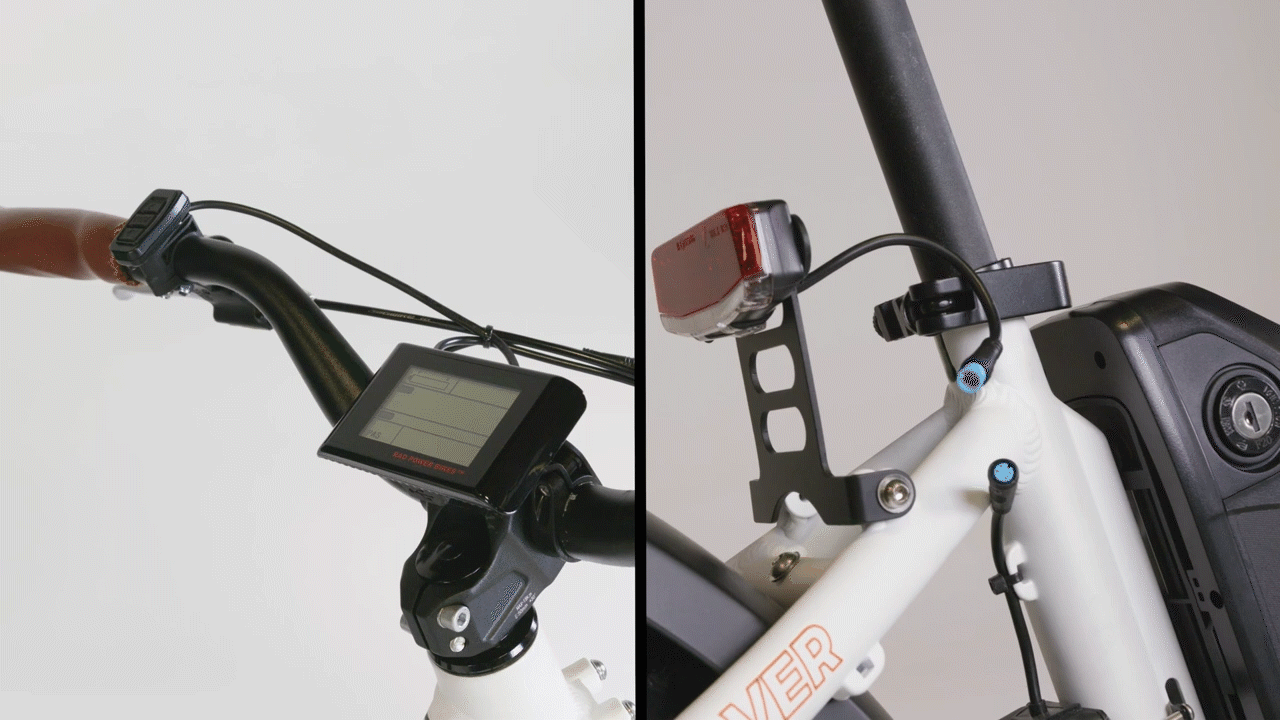
If the error is resolved, the part likely triggered the error and may need to be replaced. Take a photo and contact us for more help.
If the error continues, turn off the bike, remove the battery, discharge remaining power, and continue troubleshooting.
- Plug in the connector. Line up the internal notch and pins (and external indicators) and press directly together without twisting. Replace any snipped zip ties and trim them to be flush and smooth.
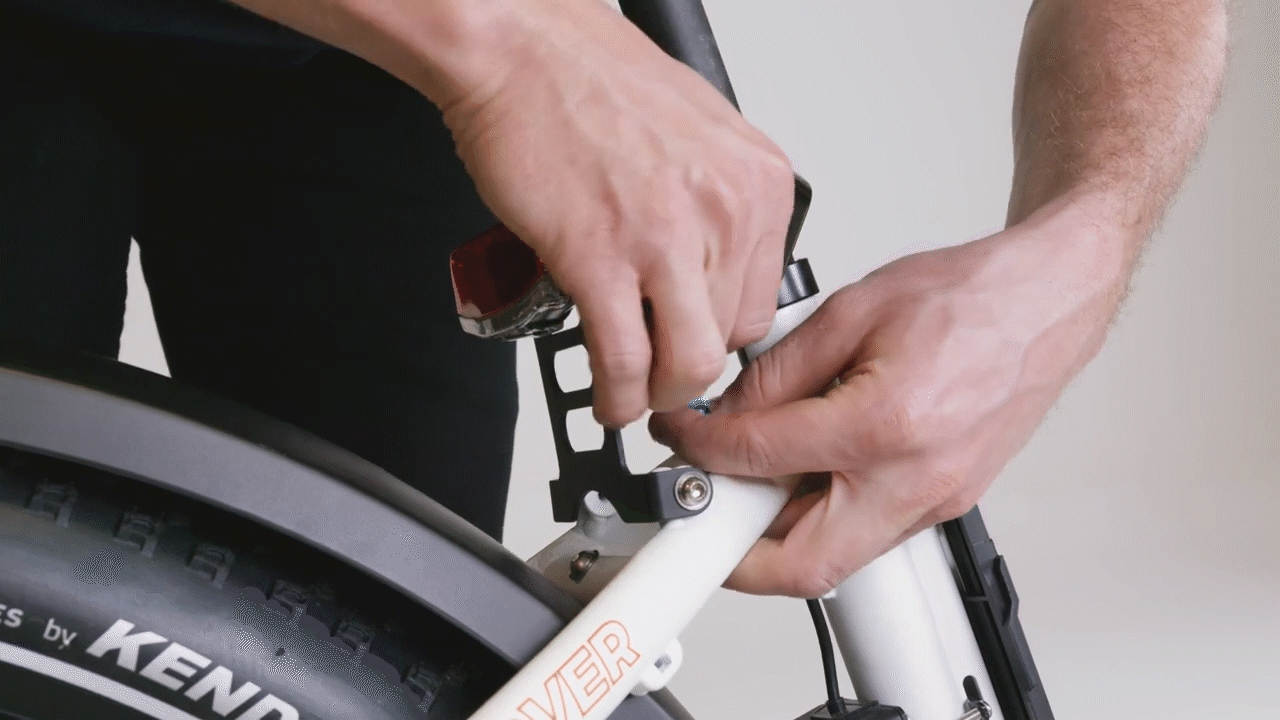
- Reinstall the battery and turn on the bike to check if the error is resolved.
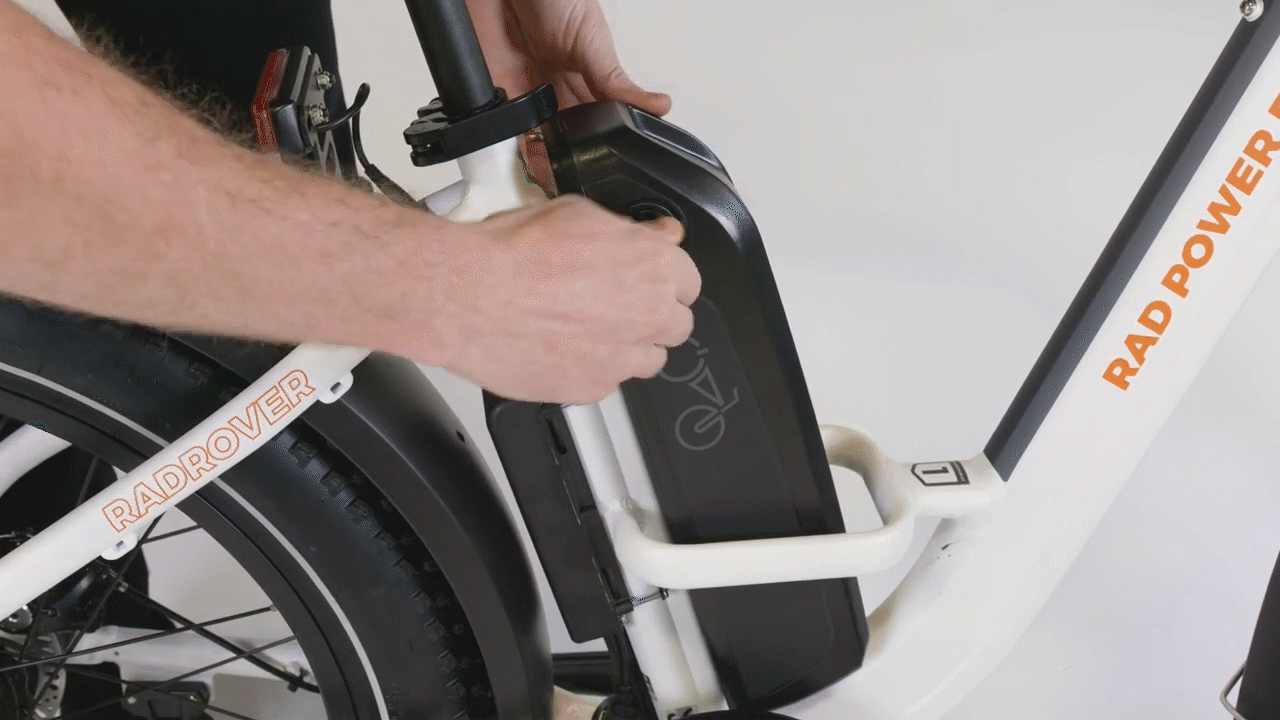
If the error is resolved, the connector was likely loose and triggered the error. Test the bike fully and ride Rad!
If the error continues, turn off the bike, remove the battery, discharge remaining power, and continue troubleshooting.
Second Taillight Connector (For Bikes with a Rear Rack Only)
Note: This connector only exists on bikes that have a rear rack installed.
- Locate and unplug the second taillight connector on the rear rack. Follow the cable from the part to the connector. Snip zip ties for easier access, then pull each side of the connector directly apart without twisting.
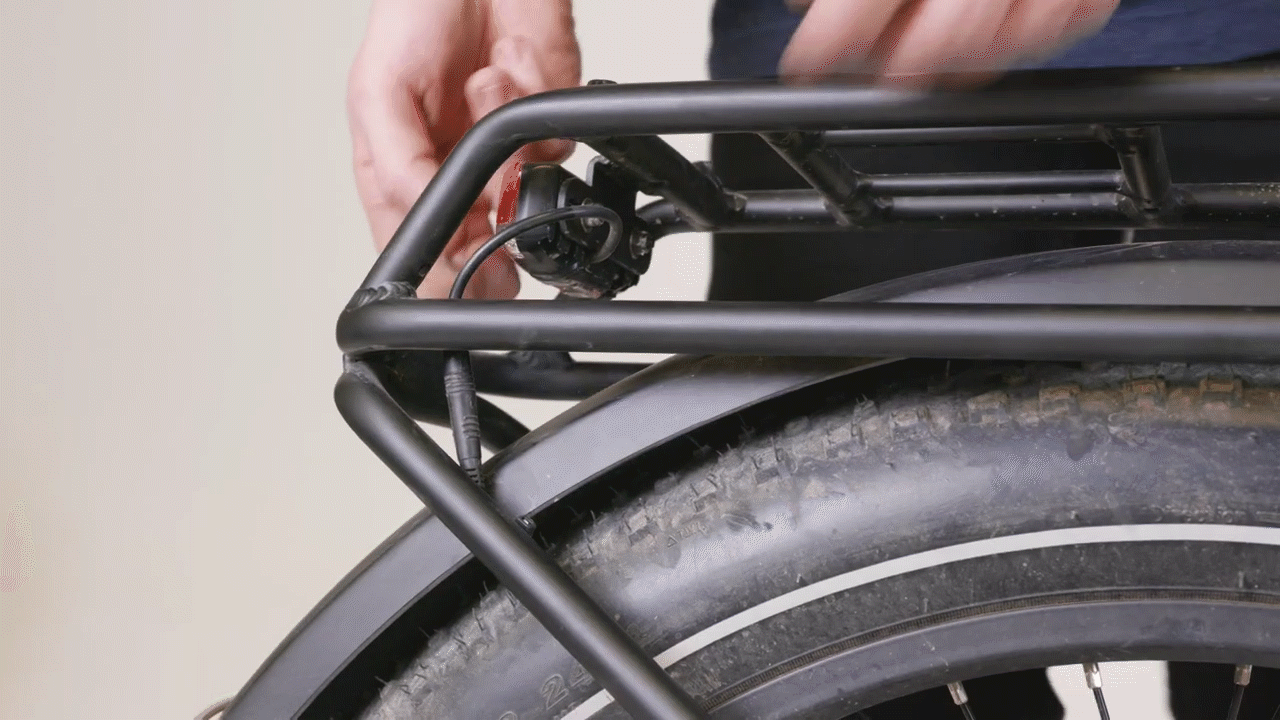
- Inspect the inside of the connector for damage, dirt, or moisture.
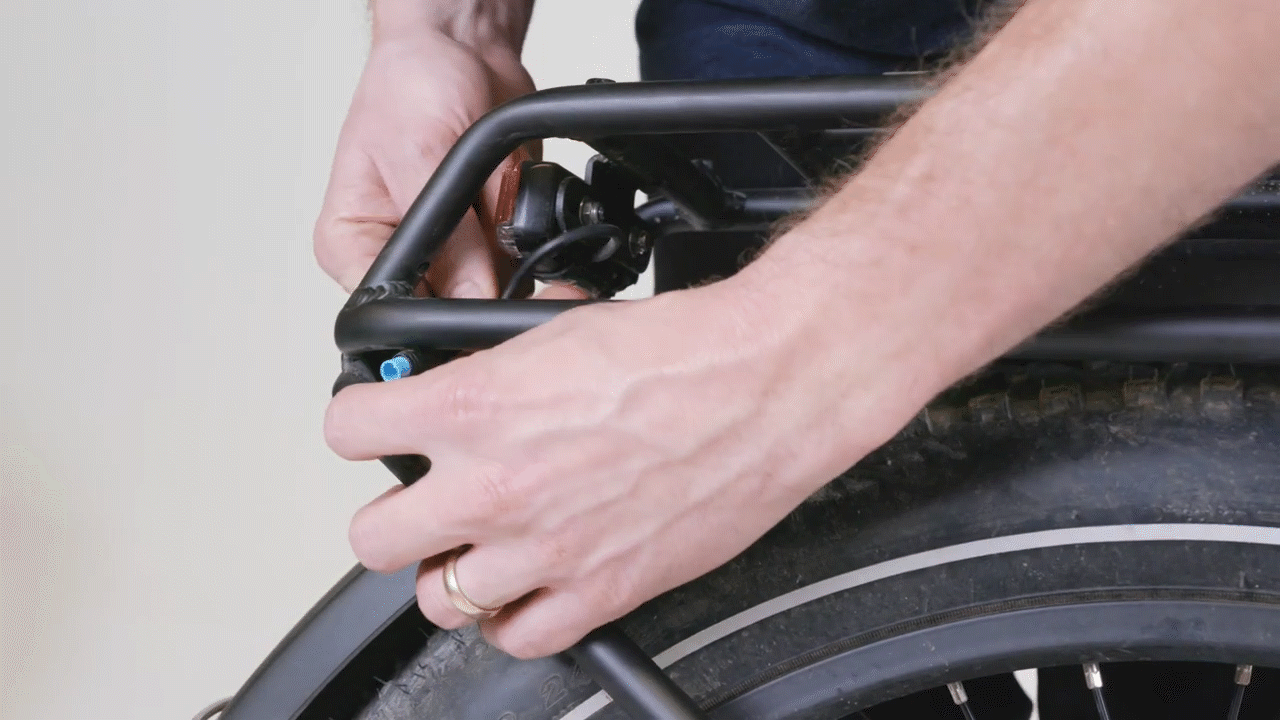
If the inside of the connector is damaged, dirty, or wet, take a photo and contact us for more help. Do not attempt to fix broken or bent pins or clean the inside of the connector.
If the connector looks normal, continue troubleshooting.
- Check if the error continues with the connector unplugged. Leave the connector unplugged. Reinstall the battery, turn on the bike, and check if the error continues.
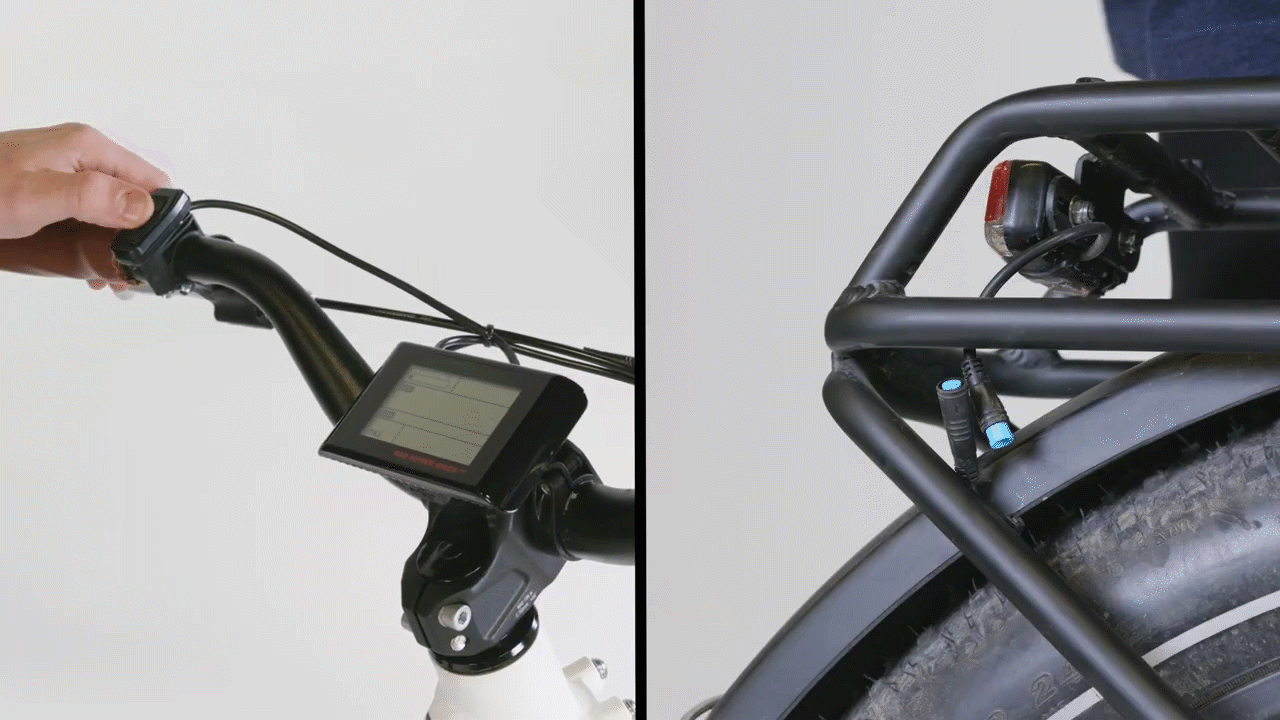
If the error is resolved, the part likely triggered the error and may need to be replaced. Take a photo and contact us for more help.
If the error continues, turn off the bike, remove the battery, discharge remaining power, and continue troubleshooting.
- Plug in the connector. Line up the internal notch and pins (and external indicators) and press directly together without twisting. Replace any snipped zip ties and trim them to be flush and smooth.
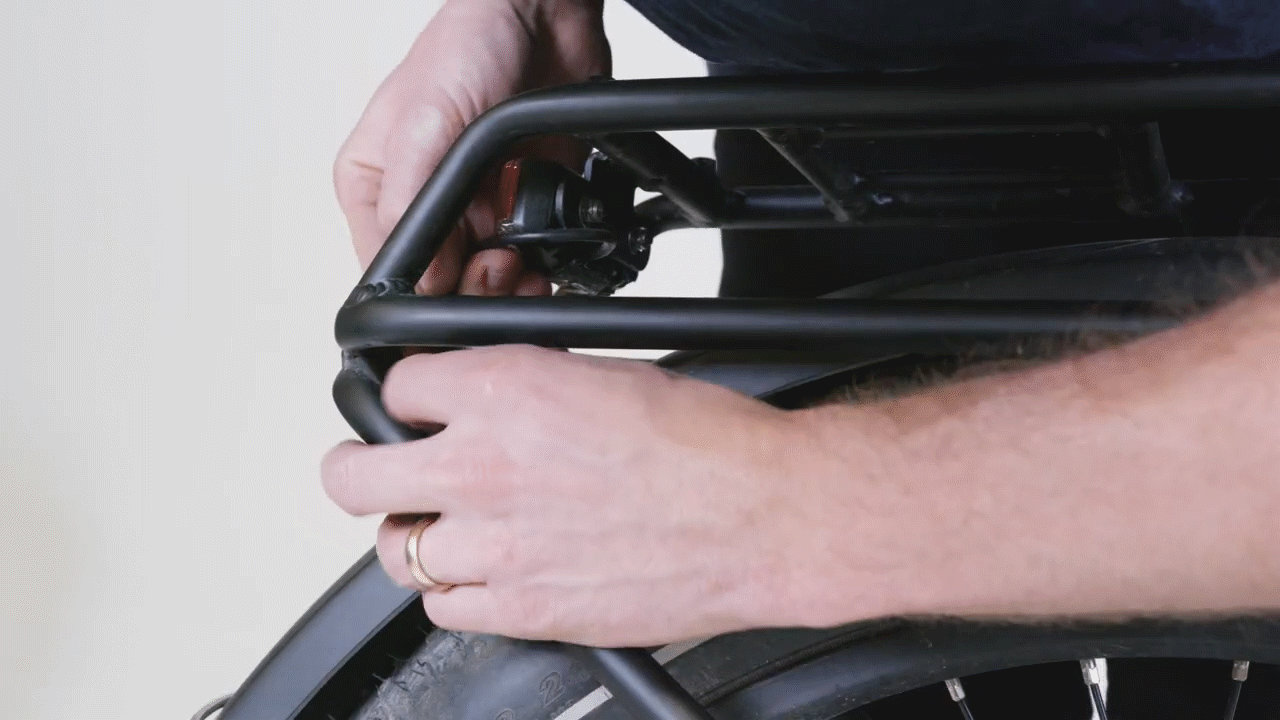
- Reinstall the battery and turn on the bike to check if the error is resolved.
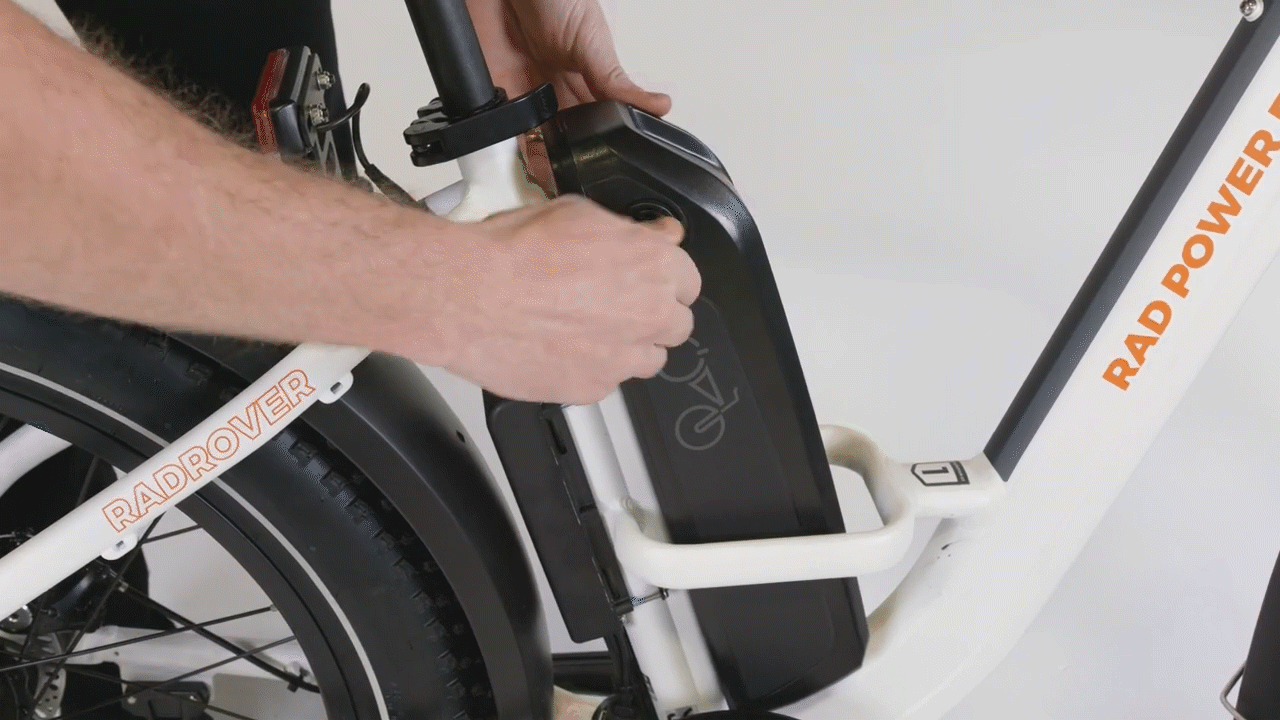
If the error is resolved, the connector was likely loose and triggered the error. Test the bike fully and ride Rad!
If the error continues, turn off the bike, remove the battery, discharge remaining power, and continue troubleshooting.
Left Brake Connector
- Locate and unplug the left brake connector. Follow the cable from the part to the connector. Snip zip ties for easier access, then pull each side of the connector directly apart without twisting.
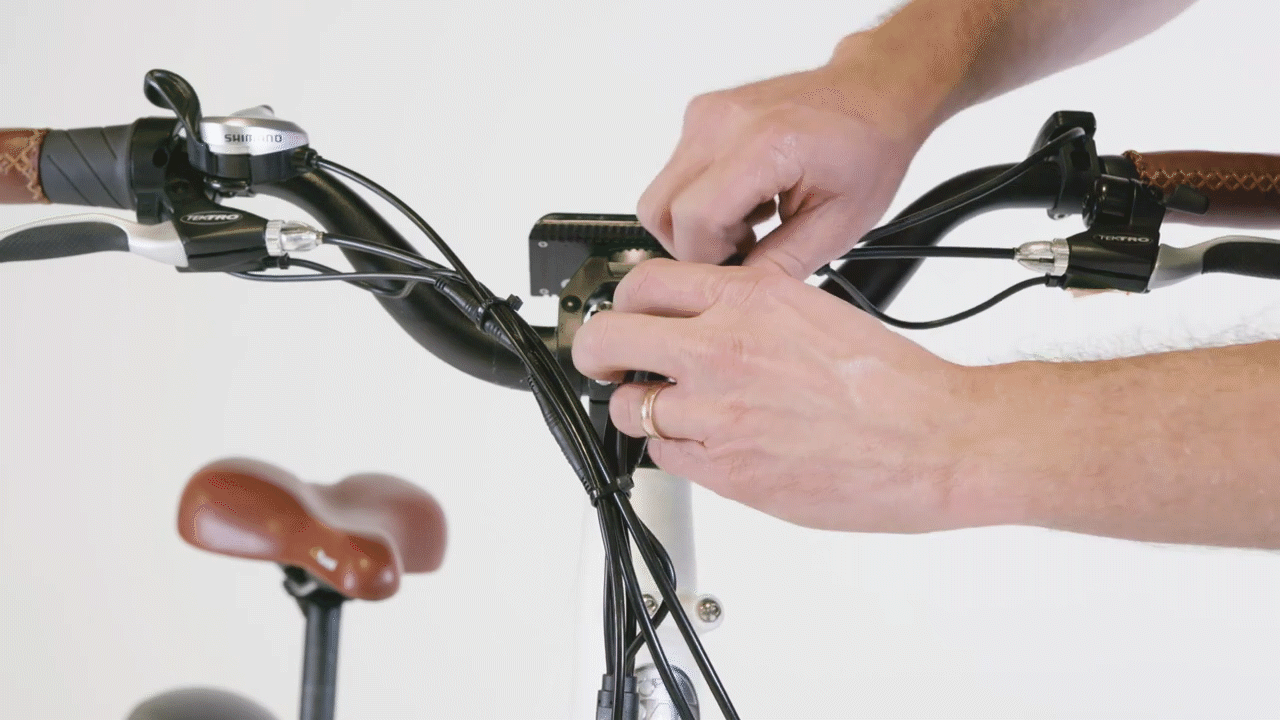
- Inspect the inside of the connector for damage, dirt, or moisture.
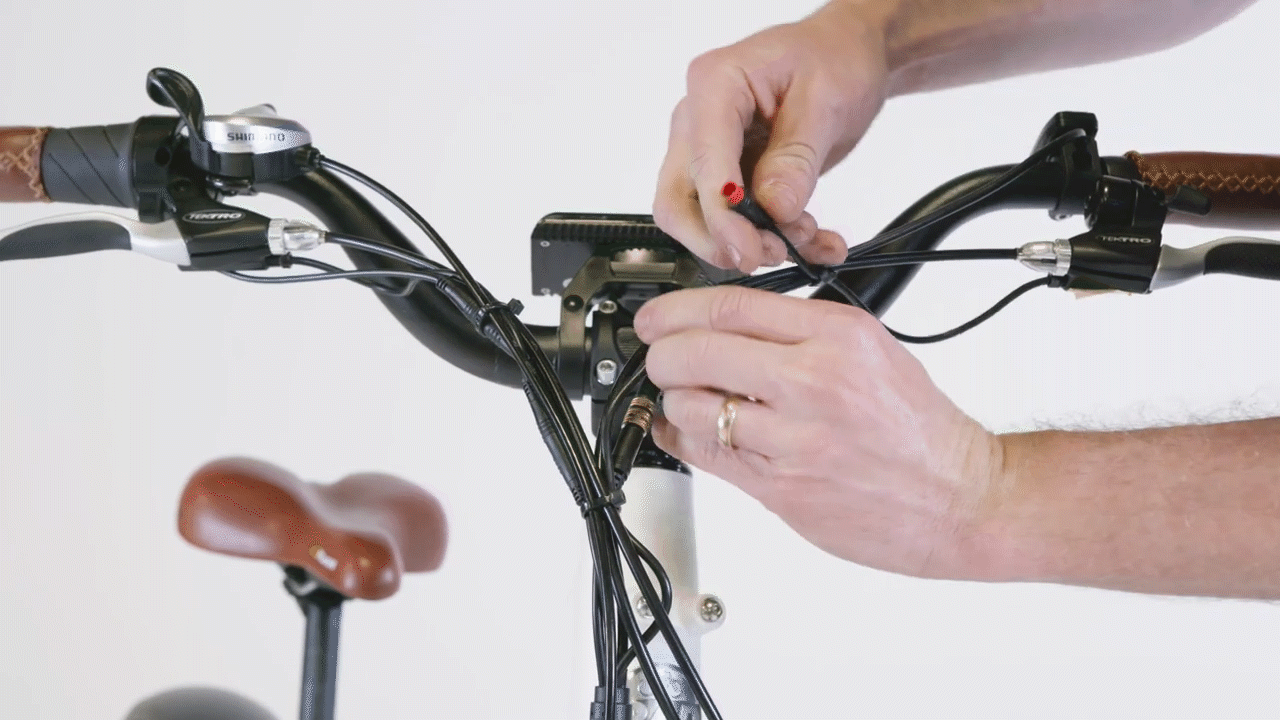
If the inside of the connector is damaged, dirty, or wet, take a photo and contact us for more help. Do not attempt to fix broken or bent pins or clean the inside of the connector.
If the connector looks normal, continue troubleshooting.
- Check if the error continues with the connector unplugged. Leave the connector unplugged. Reinstall the battery, turn on the bike, and check if the error continues.
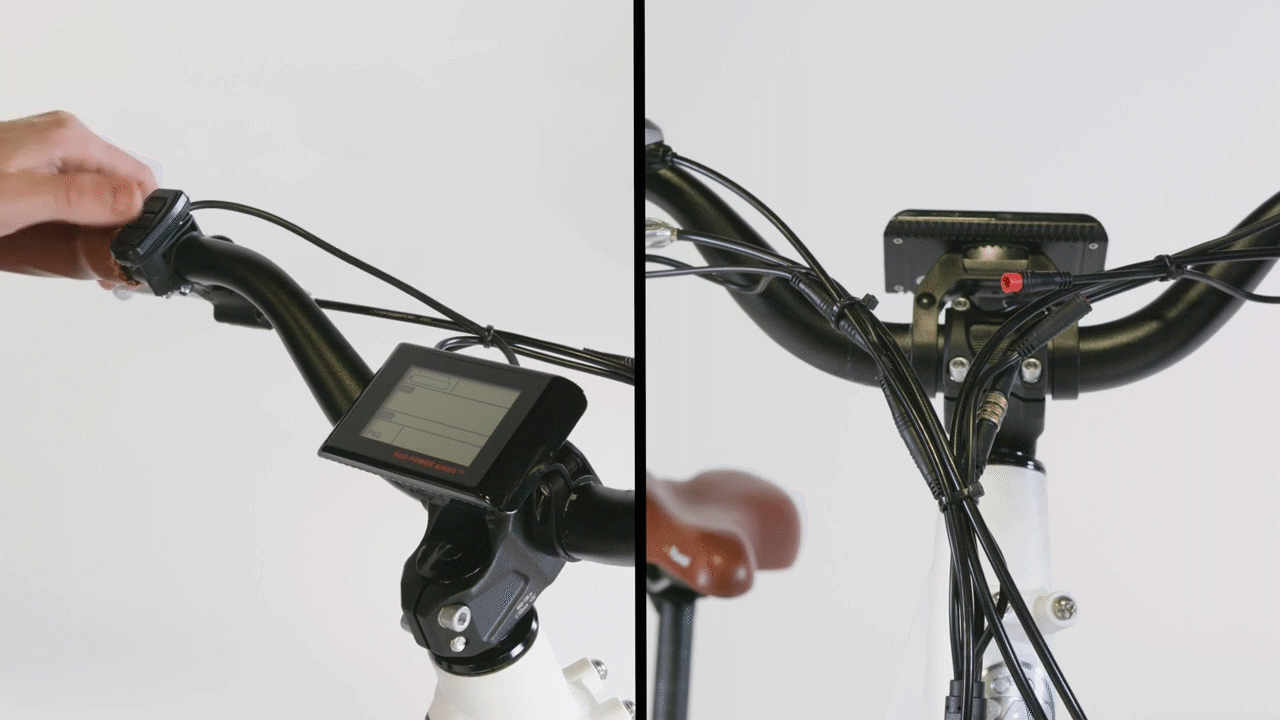
If the error is resolved, the part likely triggered the error and may need to be replaced. Take a photo and contact us for more help.
If the error continues, turn off the bike, remove the battery, discharge remaining power, and continue troubleshooting.
- Plug in the connector. Line up the internal notch and pins (and external indicators) and press directly together without twisting. Replace any snipped zip ties and trim them to be flush and smooth.
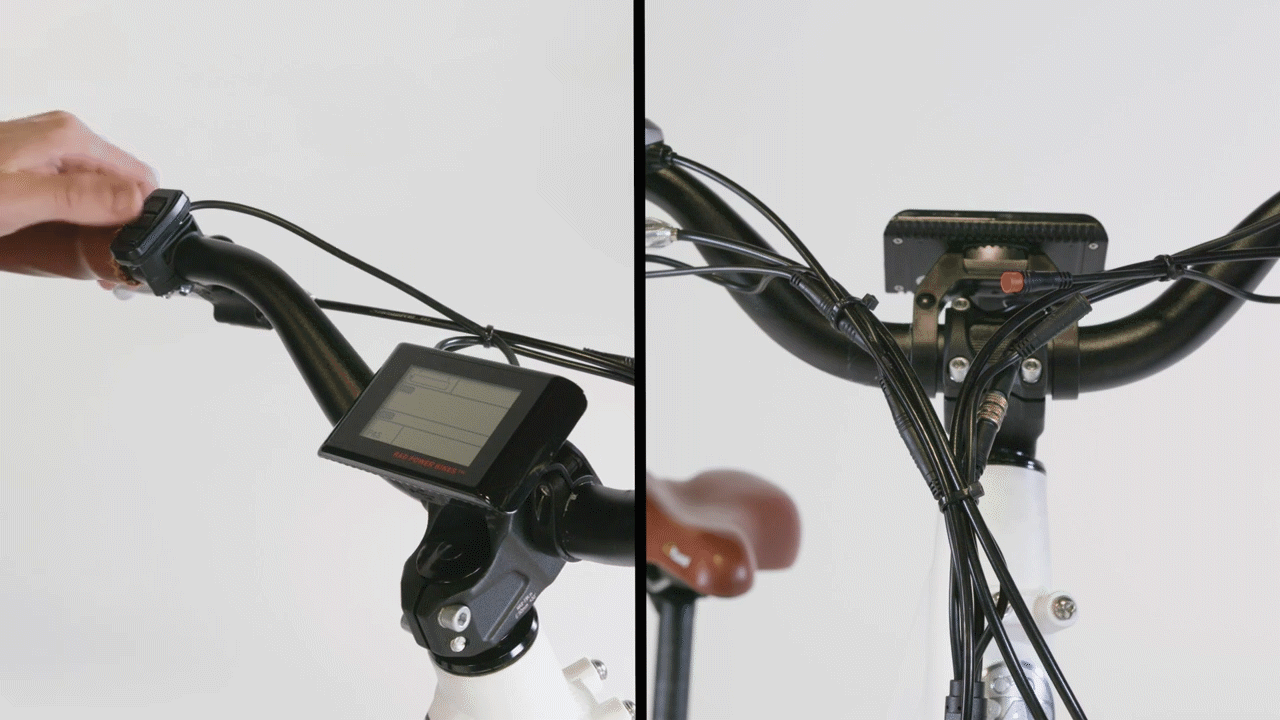
- Reinstall the battery and turn on the bike to check if the error is resolved.
If the error is resolved, the connector was likely loose and triggered the error. Test the bike fully and ride Rad!
If the error continues, turn off the bike, remove the battery, discharge remaining power, and continue troubleshooting.
Right Brake Connector
- Locate and unplug the right brake connector. Follow the cable from the part to the connector. Snip zip ties for easier access, then pull each side of the connector directly apart without twisting.
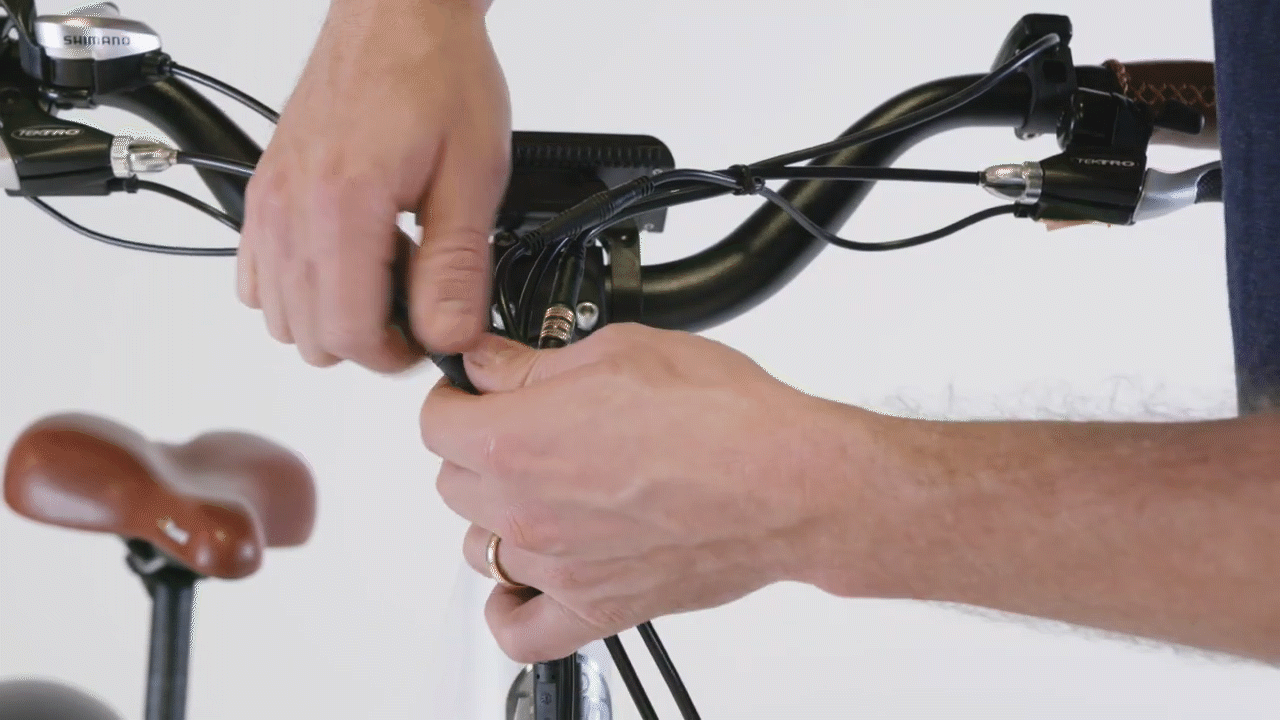
- Inspect the inside of the connector for damage, dirt, or moisture.
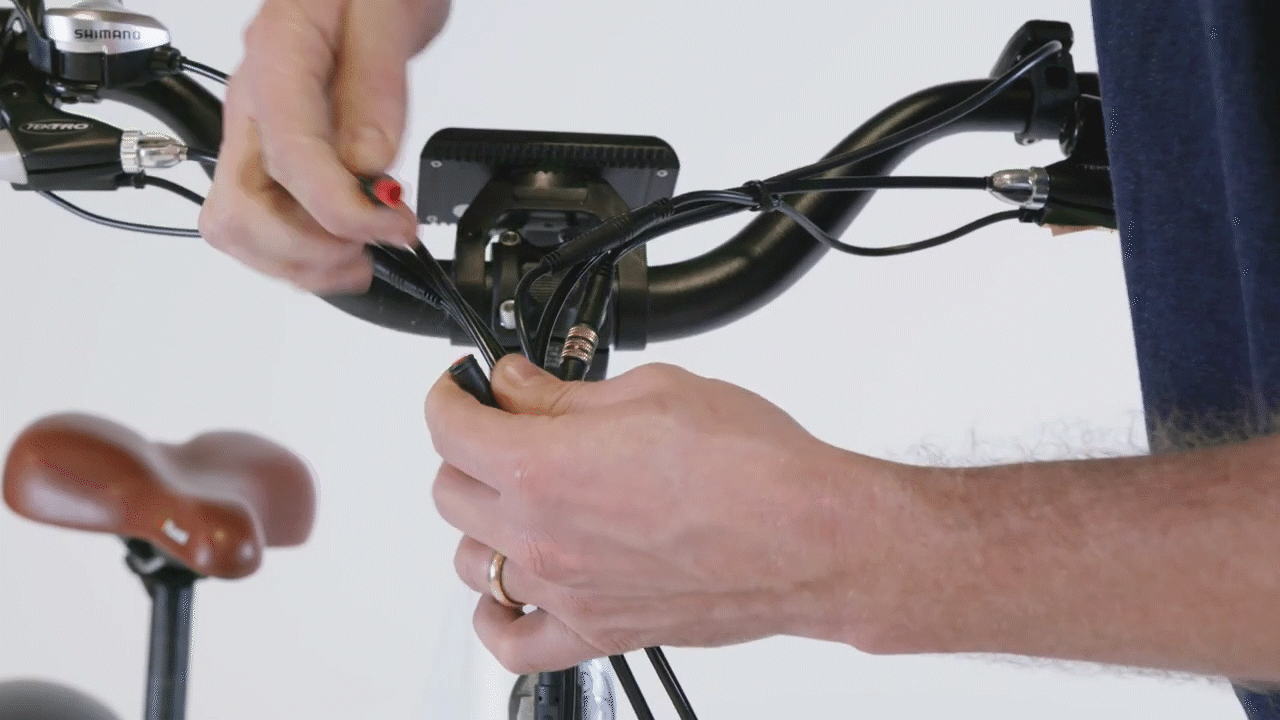

If the inside of the connector is damaged, dirty, or wet, take a photo and contact us for more help. Do not attempt to fix broken or bent pins or clean the inside of the connector.
If the connector looks normal, continue troubleshooting.
- Check if the error continues with the connector unplugged. Leave the connector unplugged. Reinstall the battery, turn on the bike, and check if the error continues.
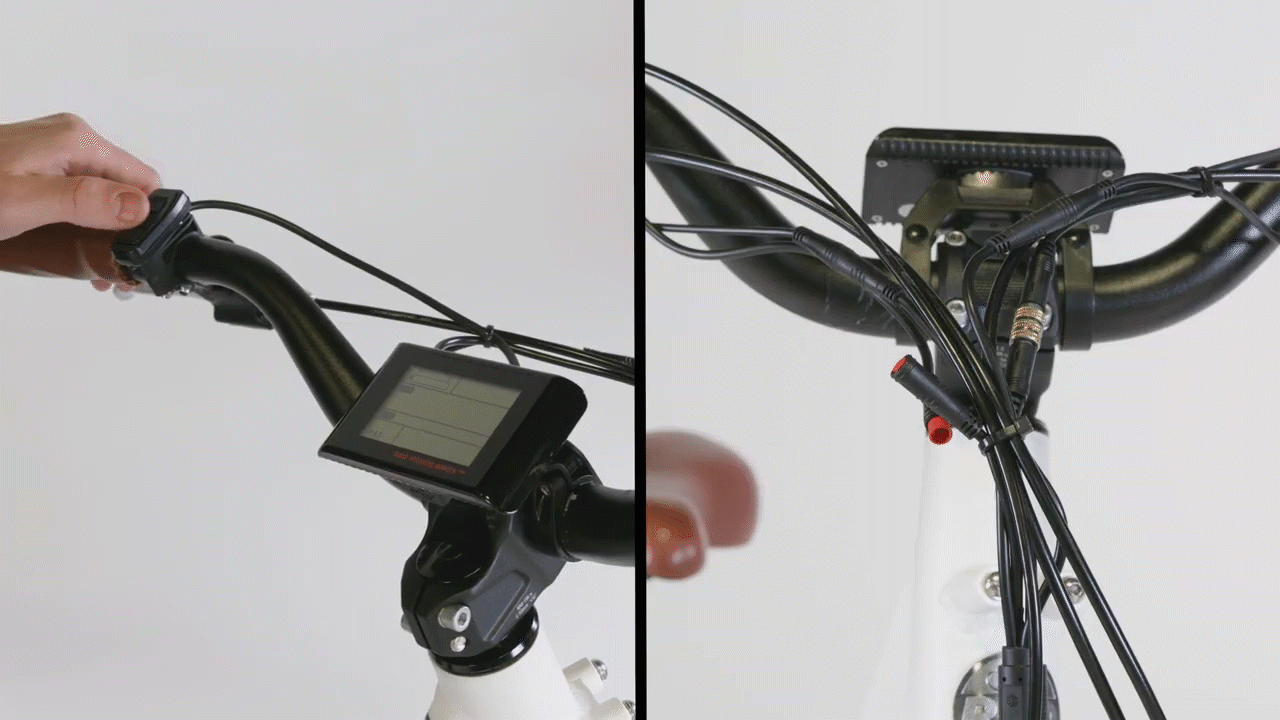

If the error is resolved, the part likely triggered the error and may need to be replaced. Take a photo and contact us for more help.
If the error continues, turn off the bike, remove the battery, discharge remaining power, and continue troubleshooting.
- Plug in the connector. Line up the internal notch and pins (and external indicators) and press directly together without twisting. Replace any snipped zip ties and trim them to be flush and smooth.
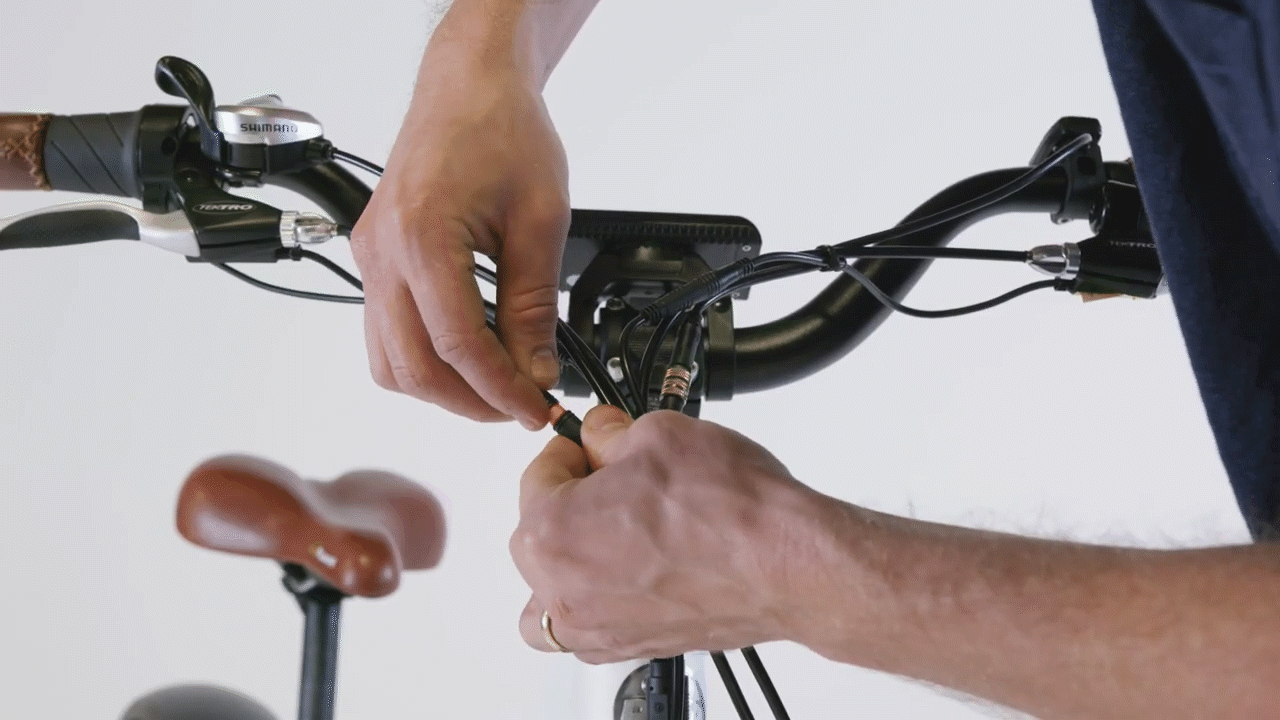
- Reinstall the battery and turn on the bike to check if the error is resolved.
If the error is resolved, the connector was likely loose and triggered the error. Test the bike fully and ride Rad!
If the error continues, turn off the bike, remove the battery, discharge remaining power, and continue troubleshooting.
Twist Power Assist Connector
- Locate and unplug the Twist Power Assist connector. Follow the cable from the part to the connector. Snip zip ties for easier access, then pull each side of the connector directly apart without twisting.
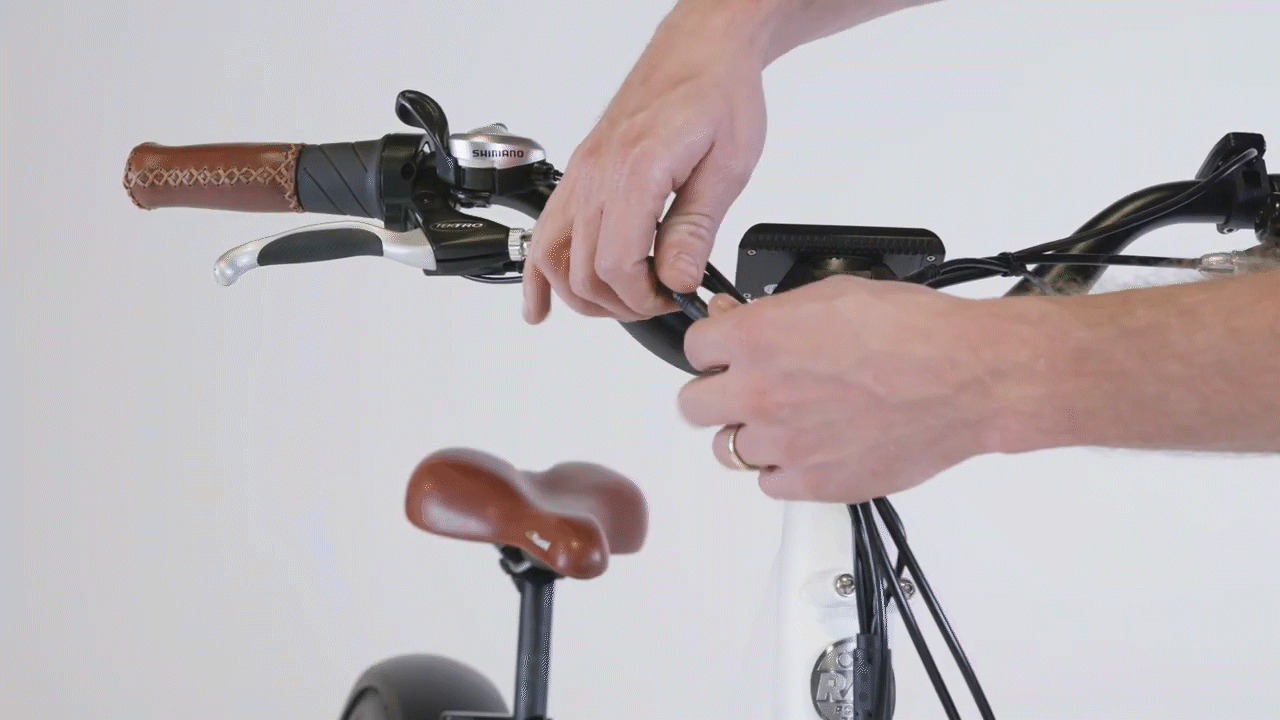
- Inspect the inside of the connector for damage, dirt, or moisture.
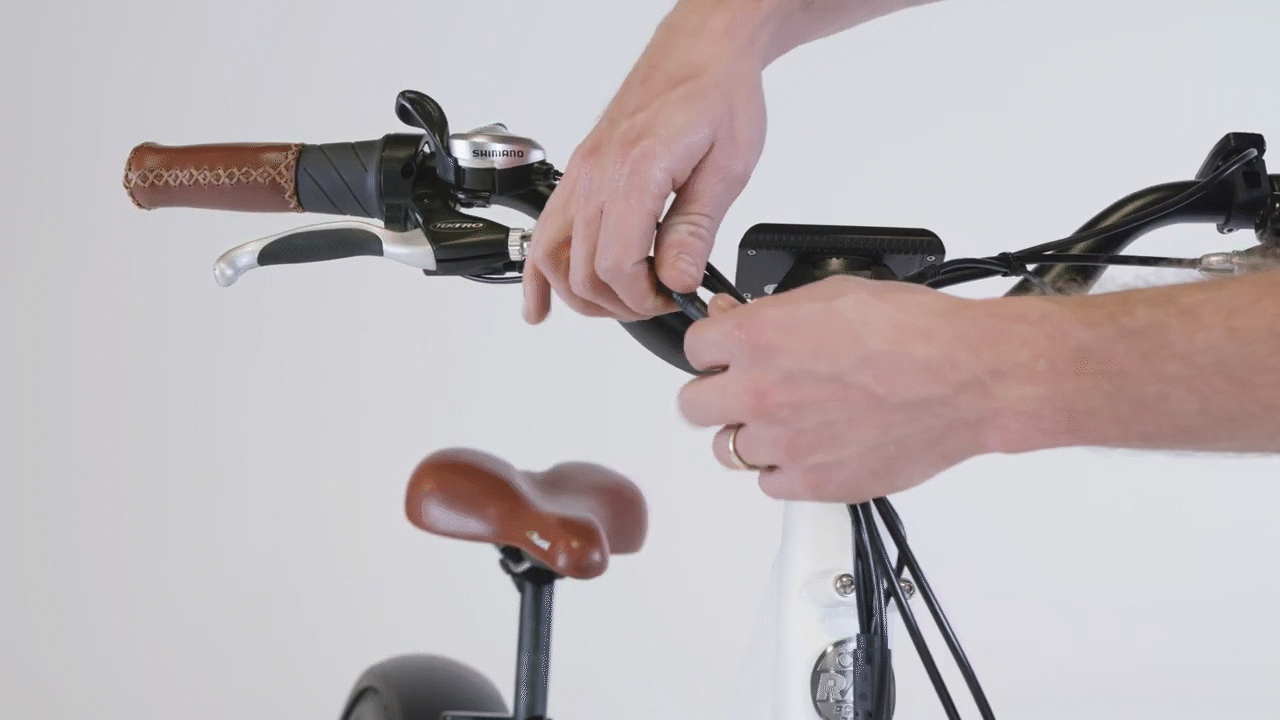
If the inside of the connector is damaged, dirty, or wet, take a photo and contact us for more help. Do not attempt to fix broken or bent pins or clean the inside of the connector.
If the connector looks normal, continue troubleshooting.
- Check if the error continues with the connector unplugged. Leave the connector unplugged. Reinstall the battery, turn on the bike, and check if the error continues.
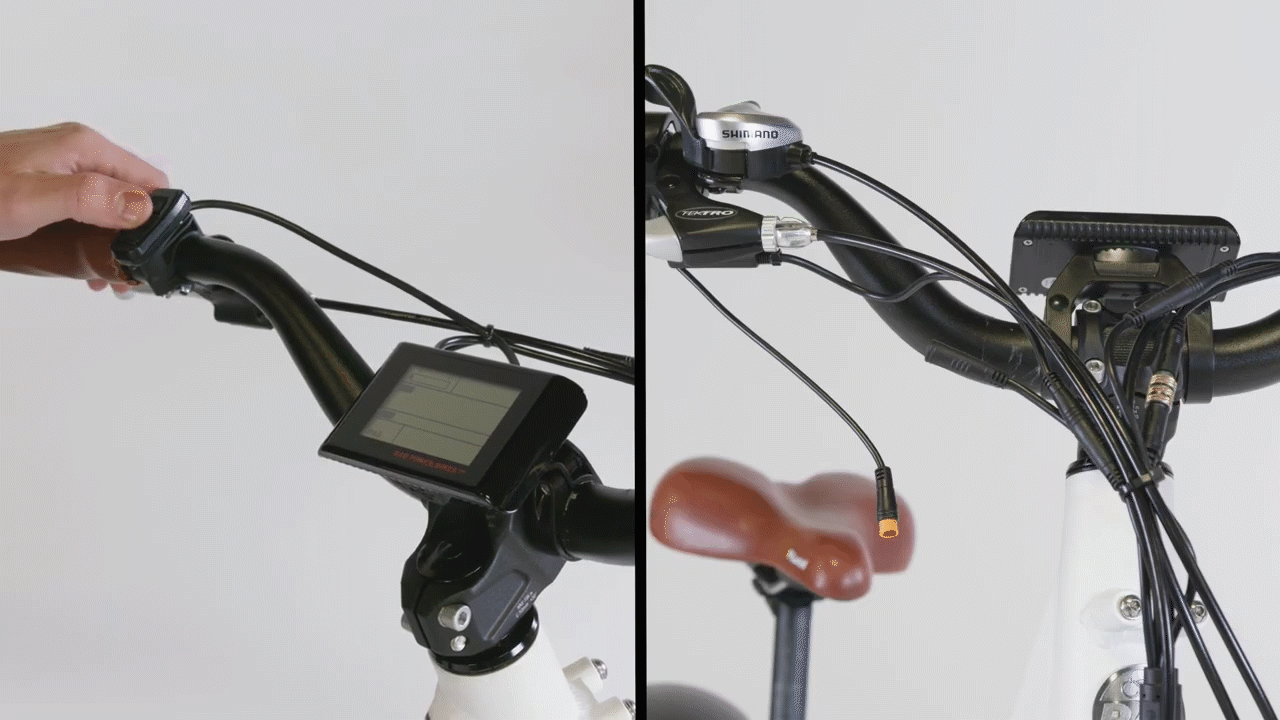
If the error is resolved, the part likely triggered the error and may need to be replaced. Take a photo and contact us for more help.
If the error continues, turn off the bike, remove the battery, discharge remaining power, and continue troubleshooting.
- Plug in the connector. Line up the internal notch and pins (and external indicators) and press directly together without twisting. Replace any snipped zip ties and trim them to be flush and smooth.
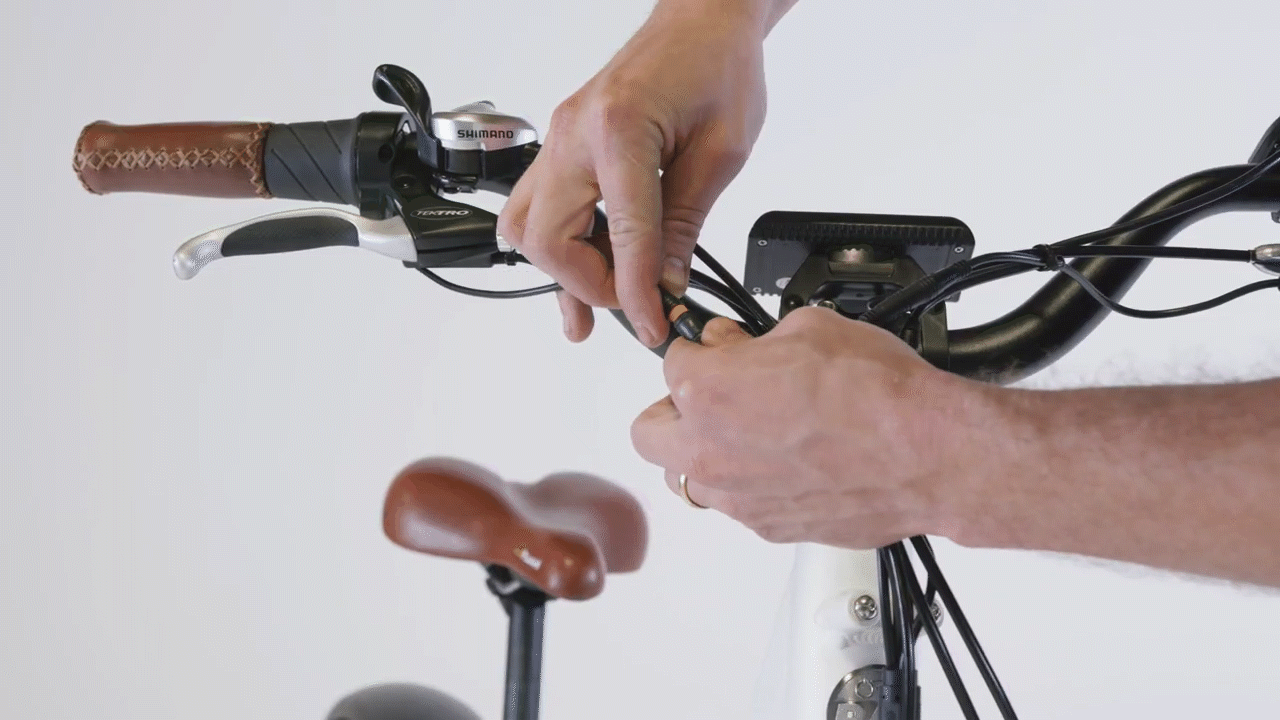
- Reinstall the battery and turn on the bike to check if the error is resolved.
If the error is resolved, the connector was likely loose and triggered the error. Test the bike fully and ride Rad!
If the error continues, turn off the bike, remove the battery, discharge remaining power, and continue troubleshooting.
Headlight Connector
- Locate and unplug the headlight connector. Follow the cable from the part to the connector. Snip zip ties for easier access, then pull each side of the connector directly apart without twisting.
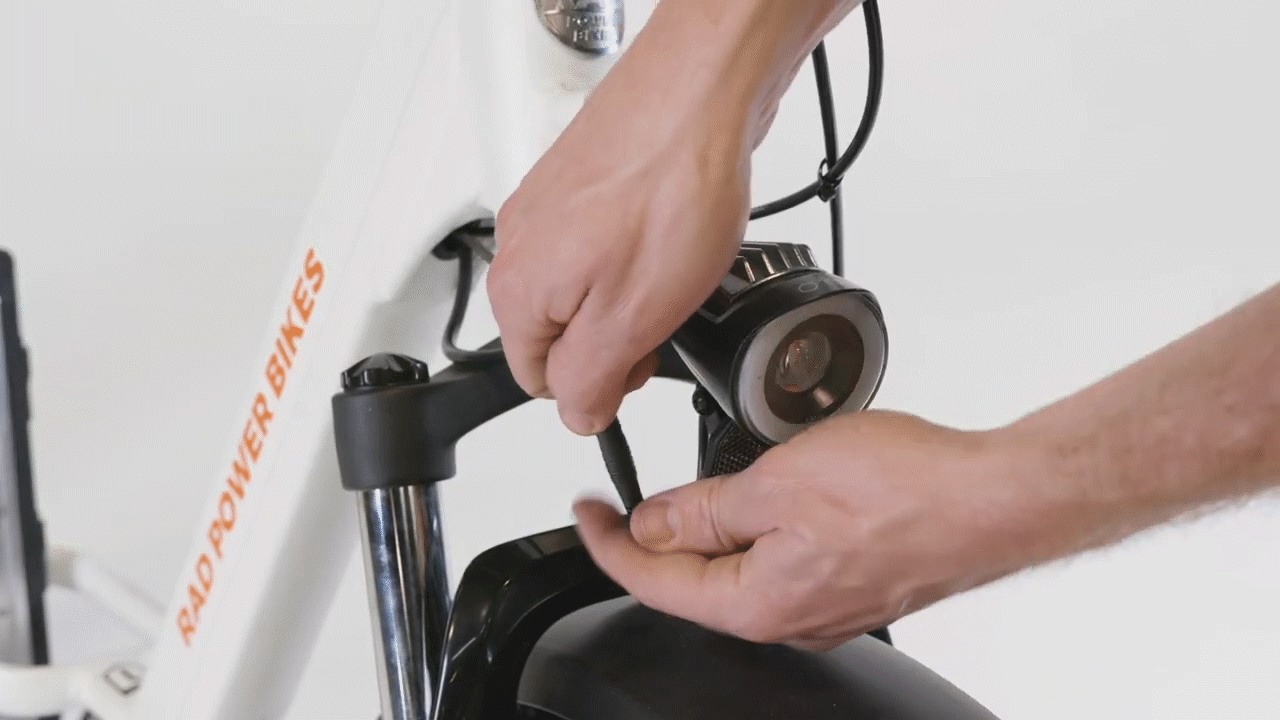
- Inspect the inside of the connector for damage, dirt, or moisture.
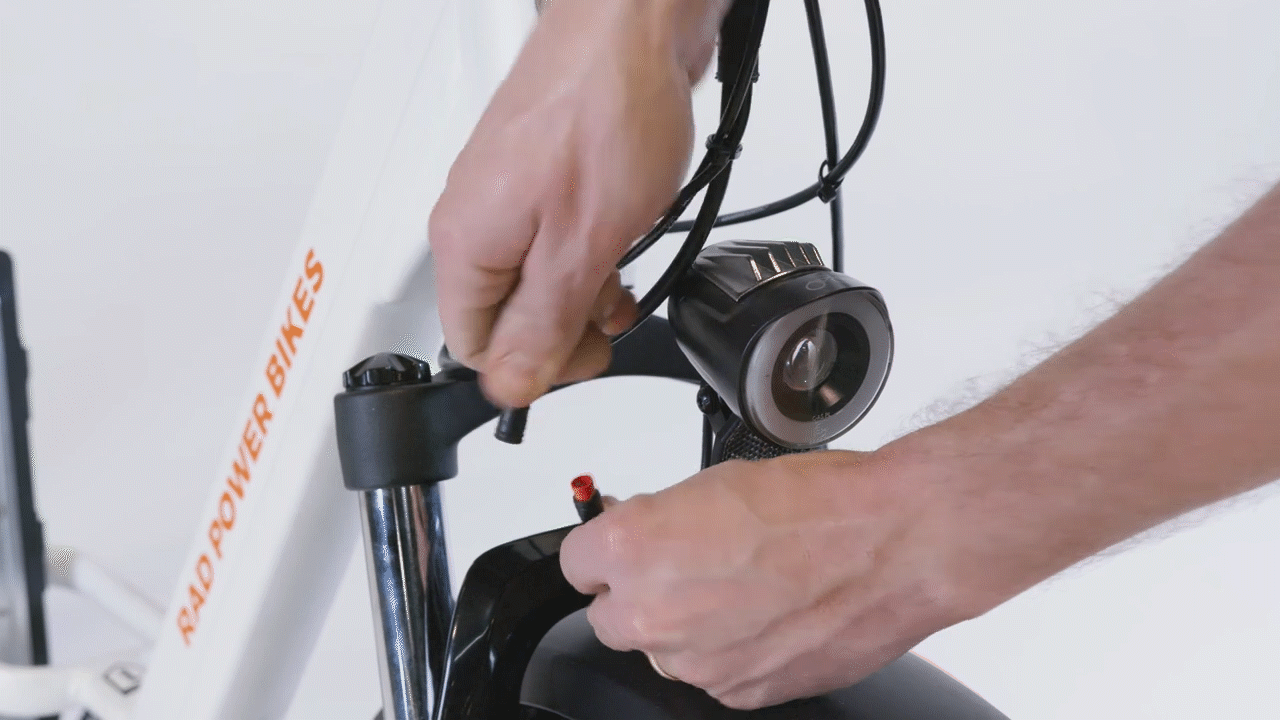
If the inside of the connector is damaged, dirty, or wet, take a photo and contact us for more help. Do not attempt to fix broken or bent pins or clean the inside of the connector.
If the connector looks normal, continue troubleshooting.
- Check if the error continues with the connector unplugged. Leave the connector unplugged. Reinstall the battery, turn on the bike, and check if the error continues.
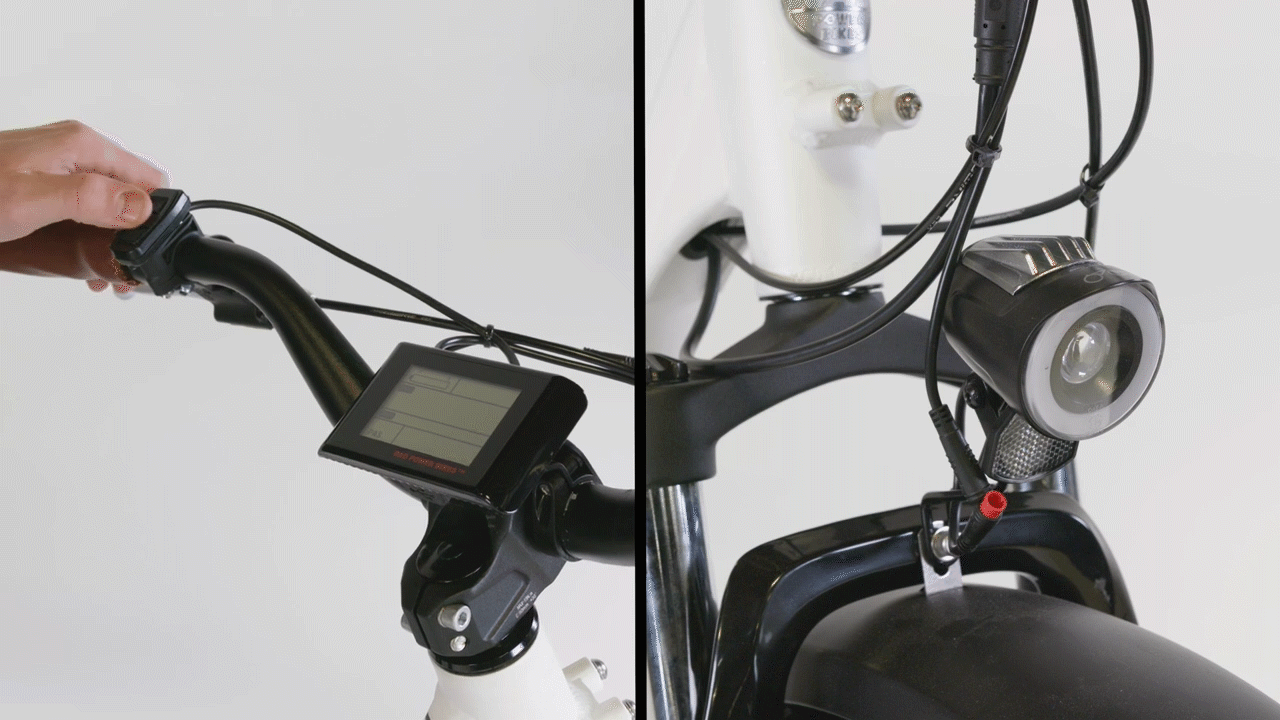
If the error is resolved, the part likely triggered the error and may need to be replaced. Take a photo and contact us for more help.
If the error continues, turn off the bike, remove the battery, discharge remaining power, and continue troubleshooting.
- Plug in the connector. Line up the internal notch and pins (and external indicators) and press directly together without twisting. Replace any snipped zip ties and trim them to be flush and smooth.
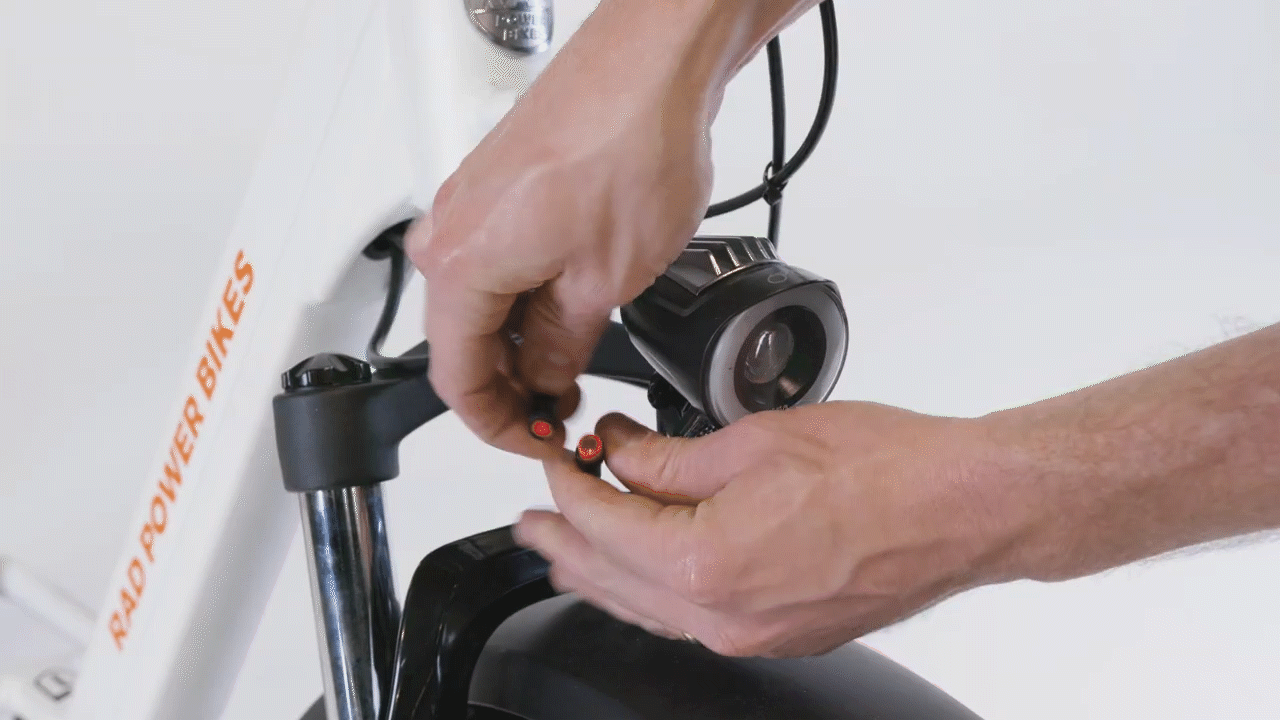
- Reinstall the battery and turn on the bike to check if the error is resolved.
If the error is resolved, the connector was likely loose and triggered the error. Test the bike fully and ride Rad!
If the error continues, more troubleshooting may be required. Contact us for more help!
